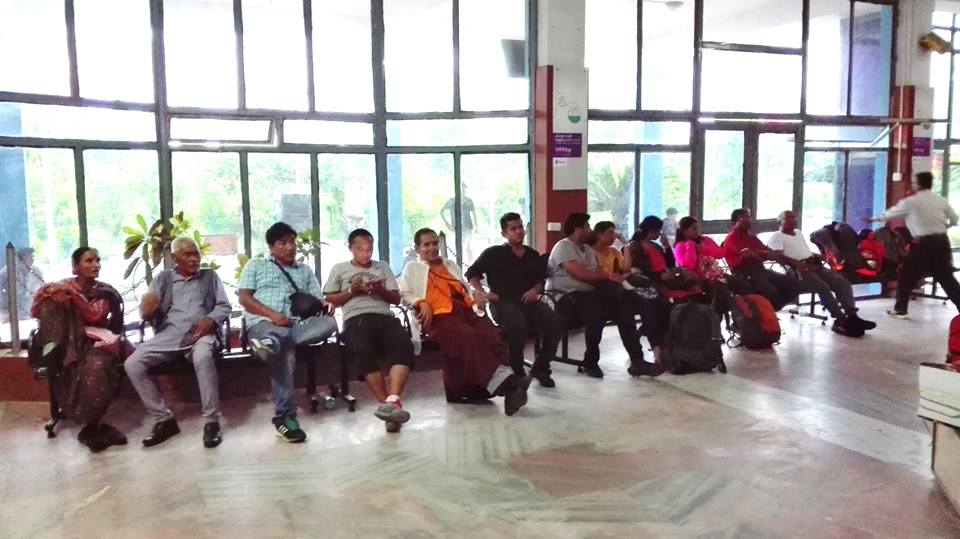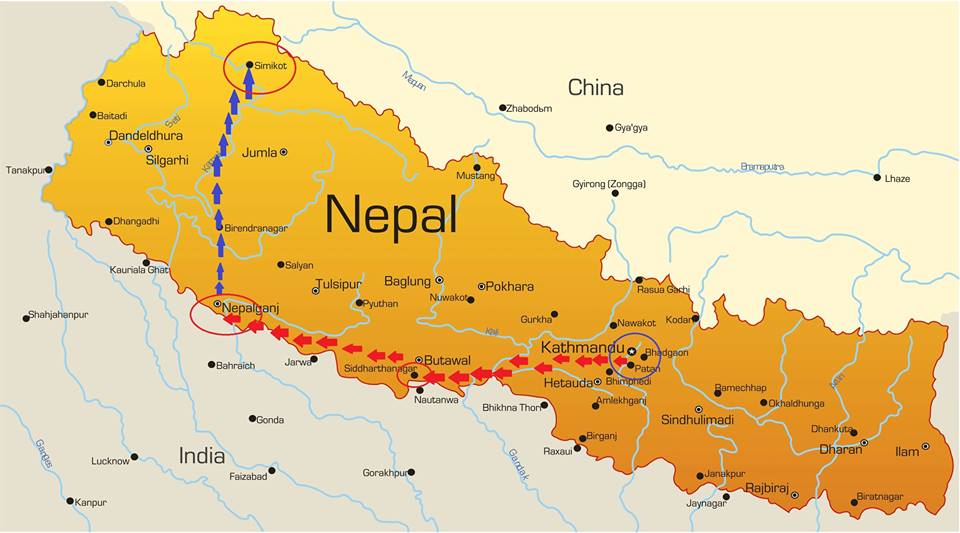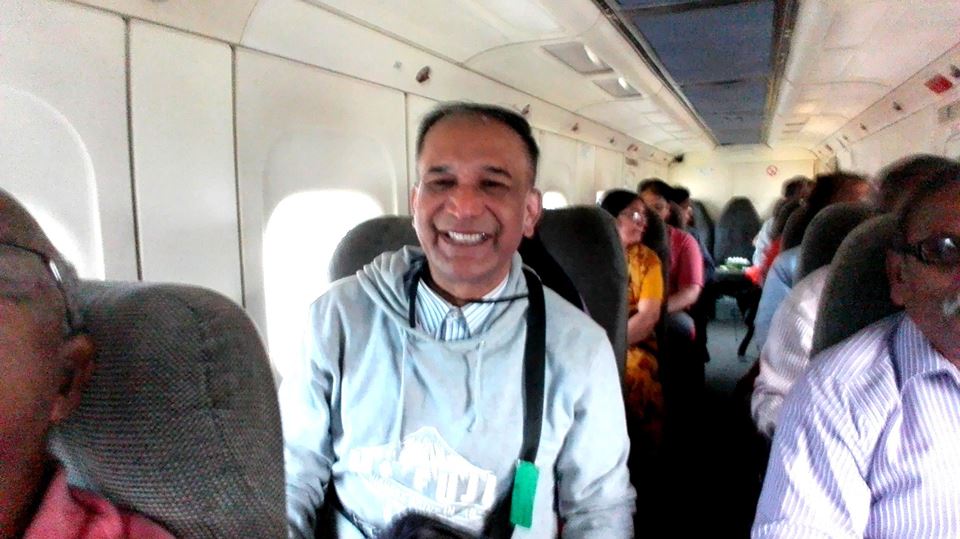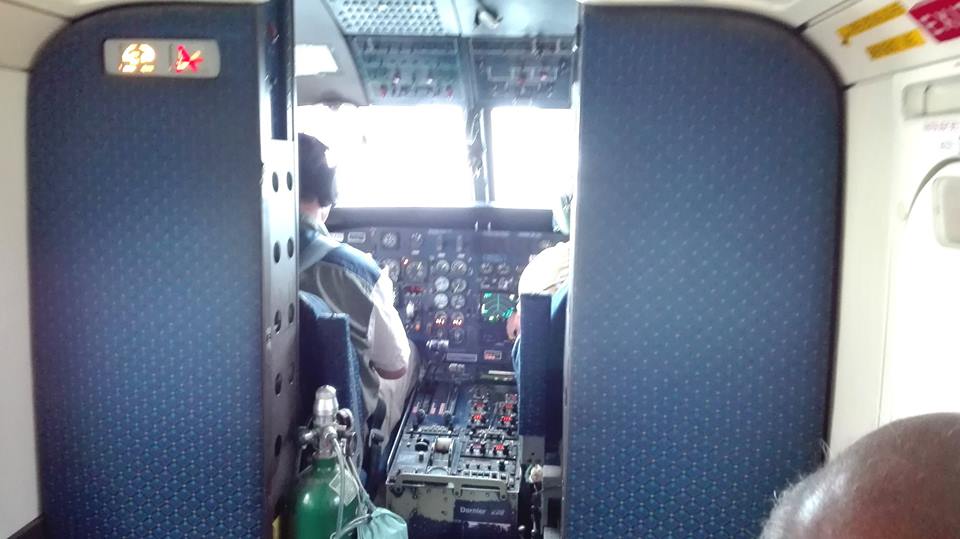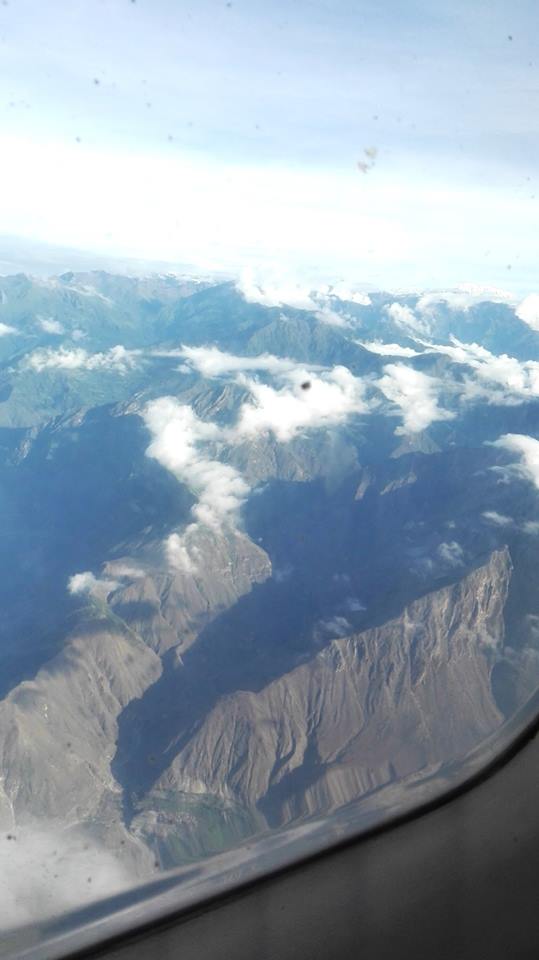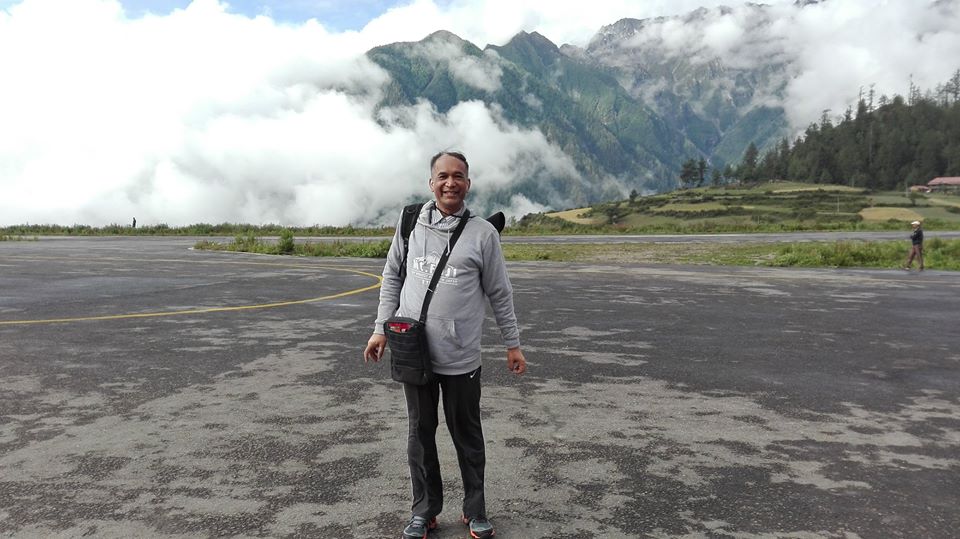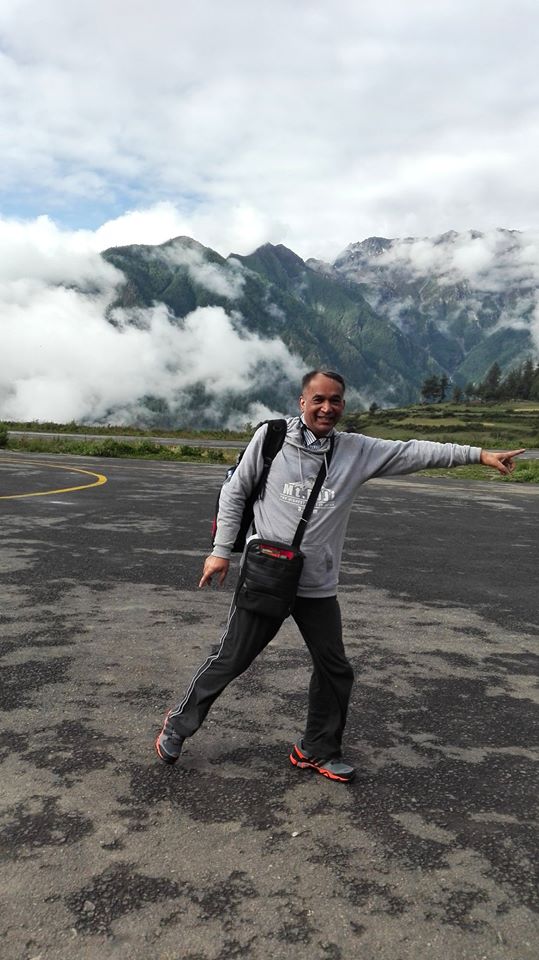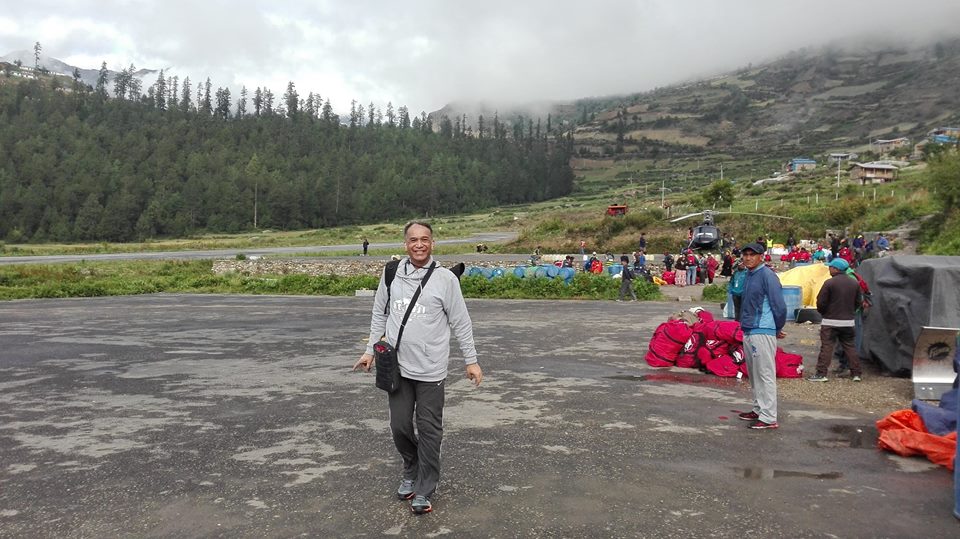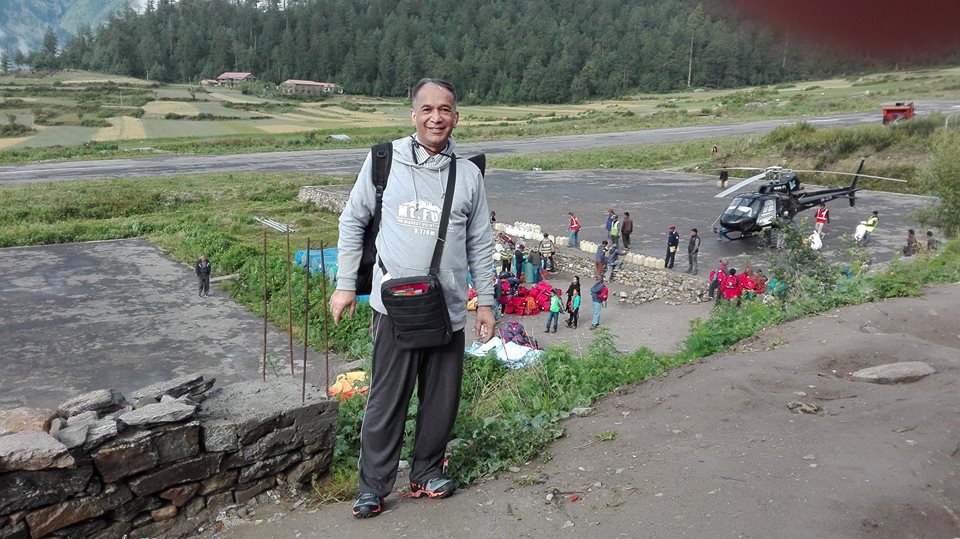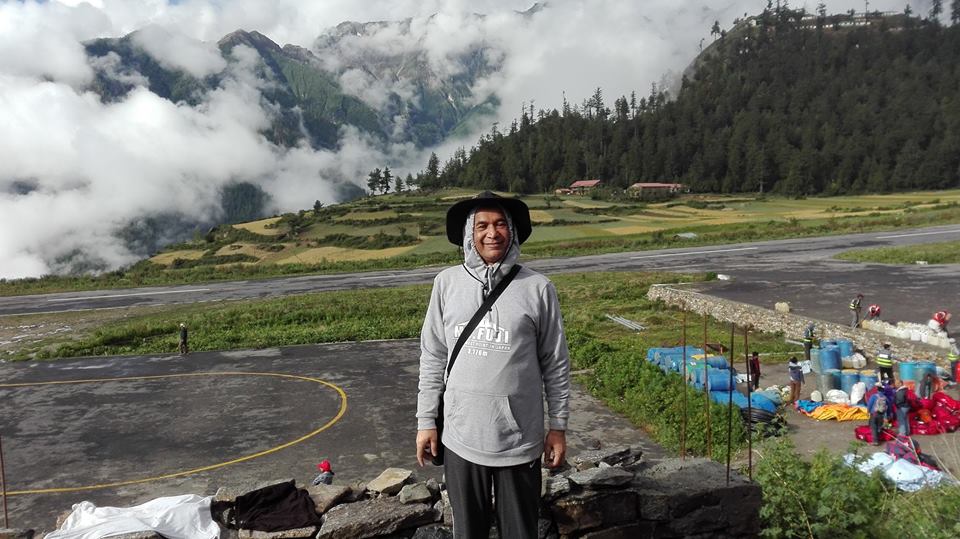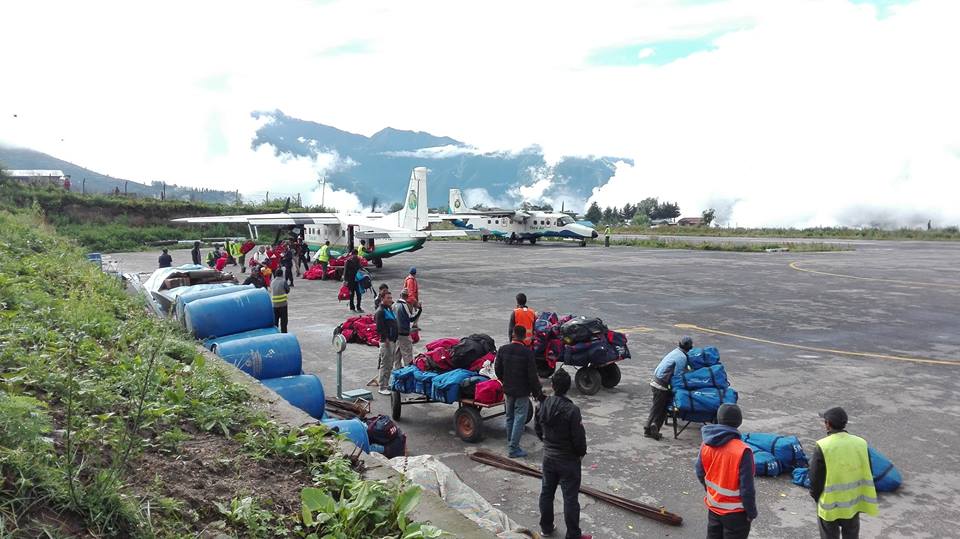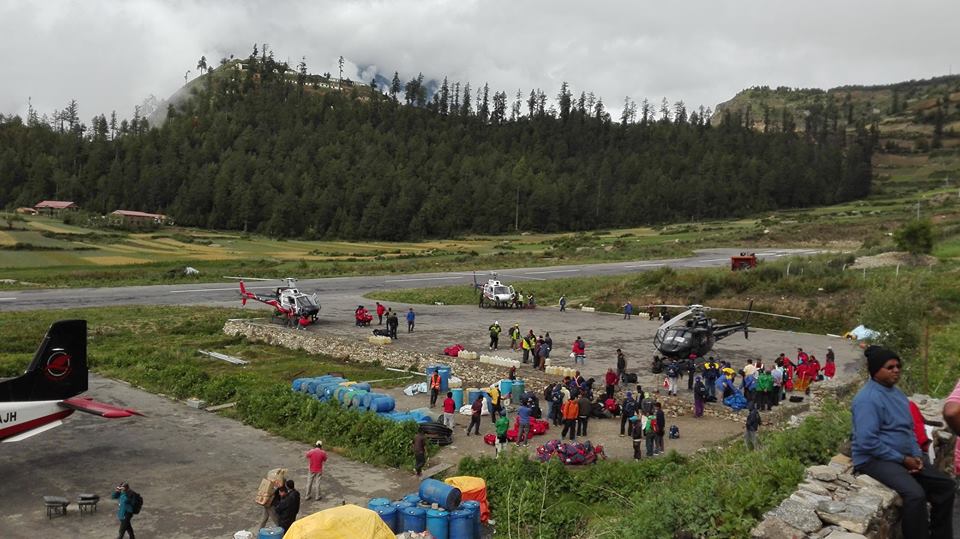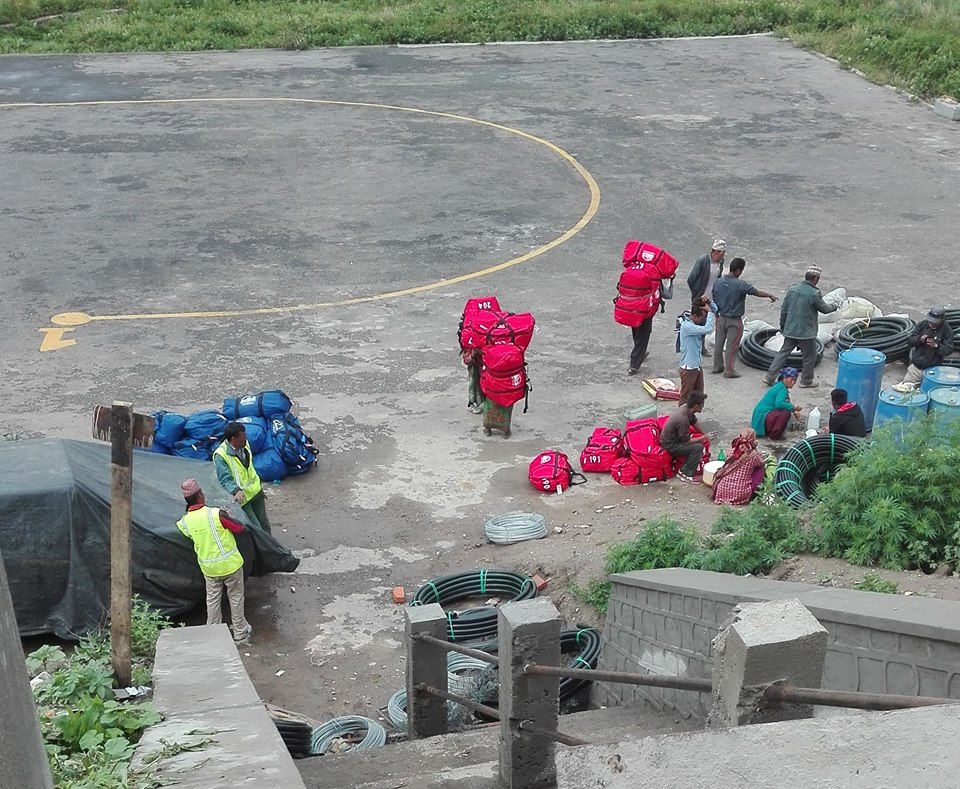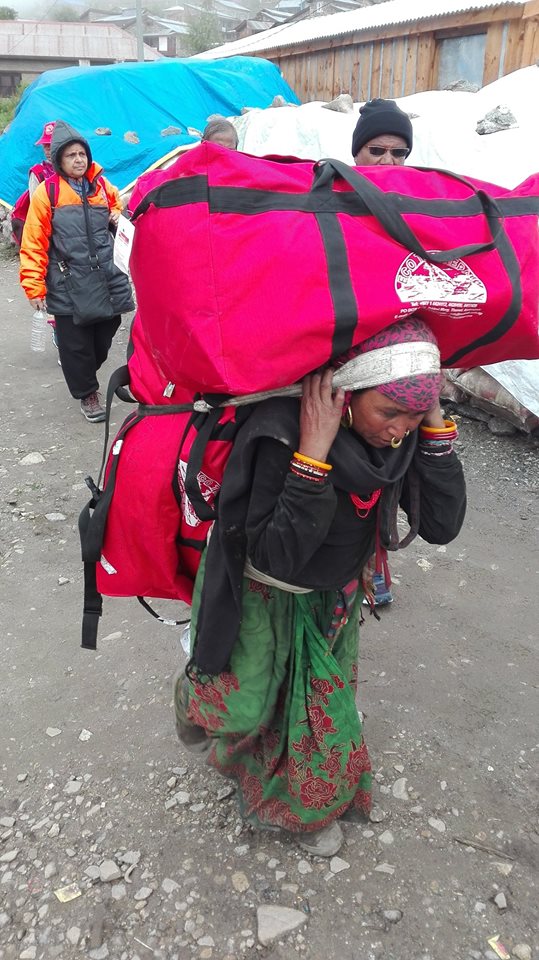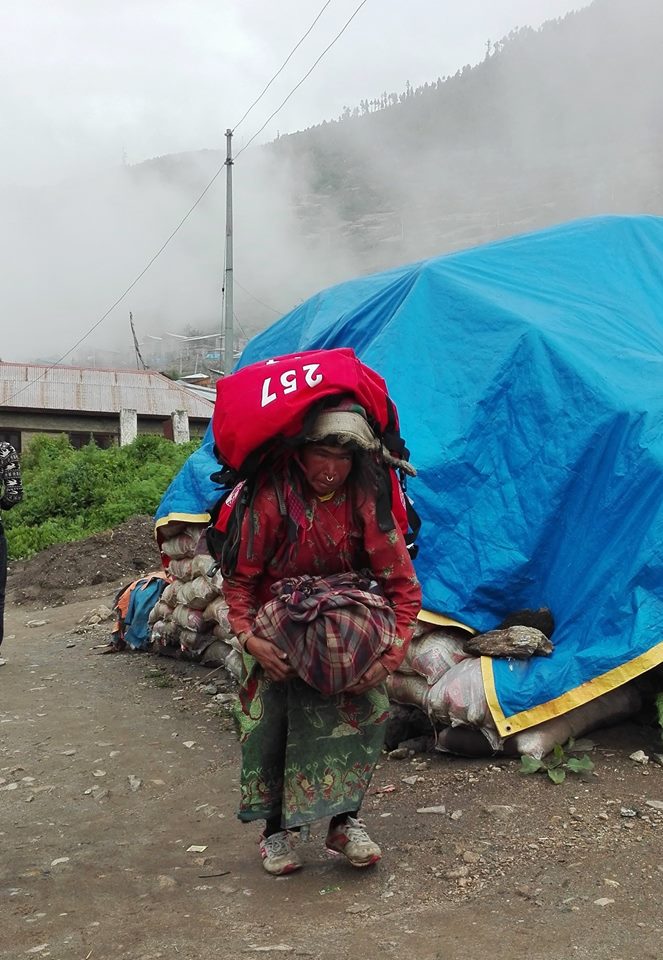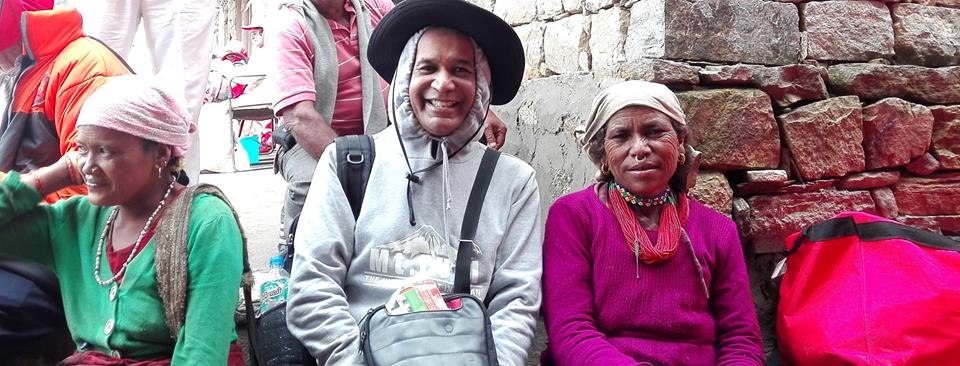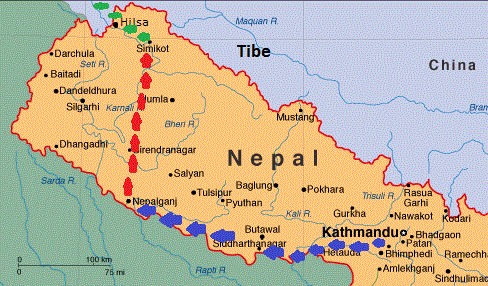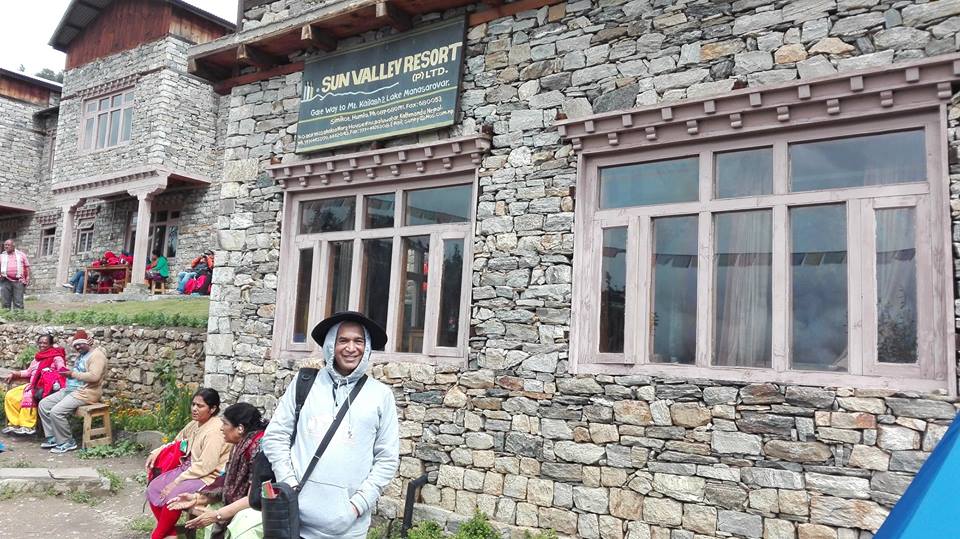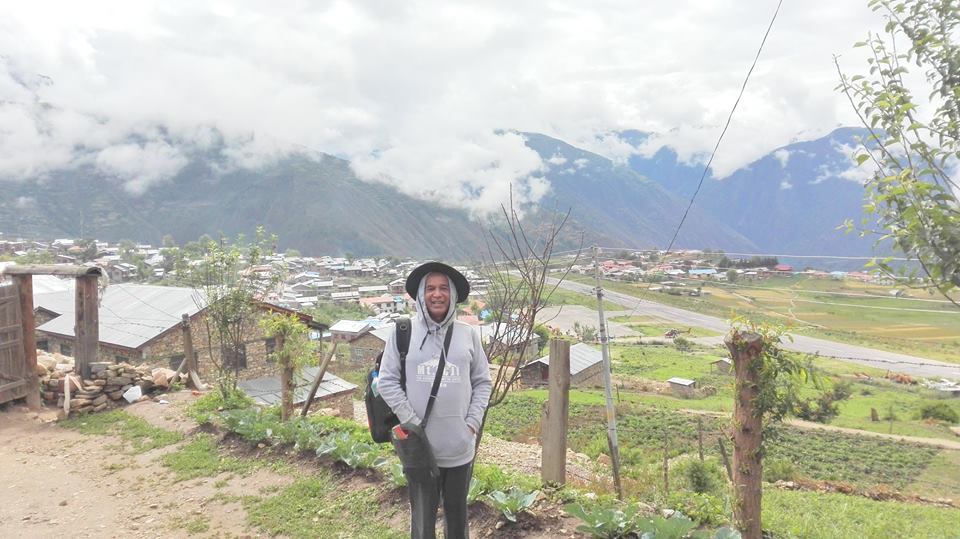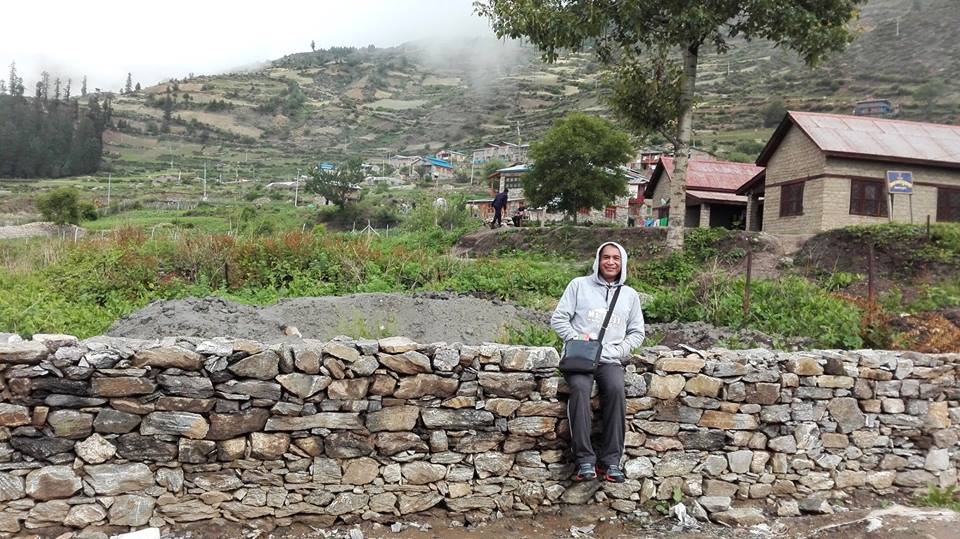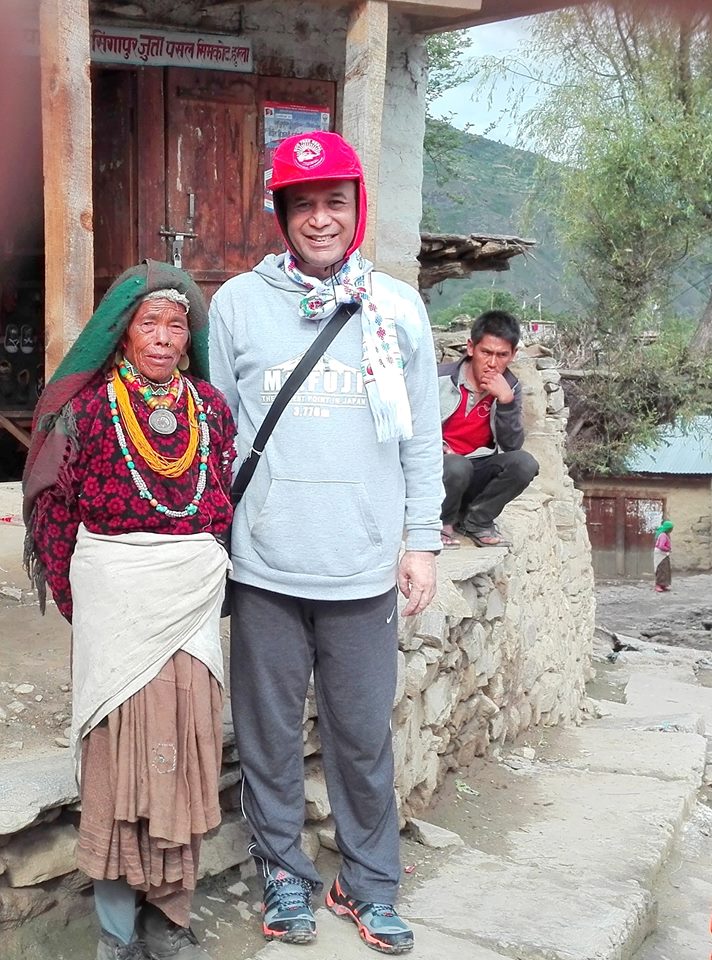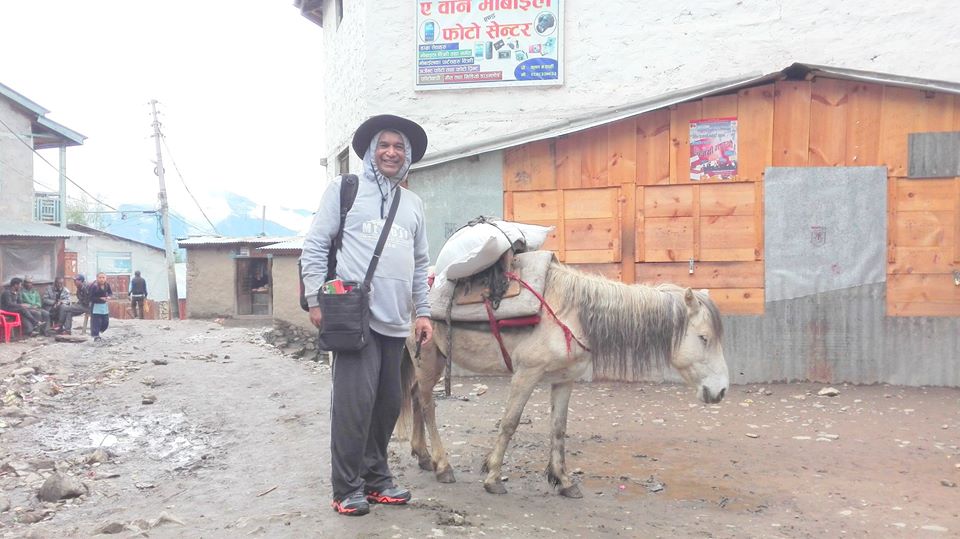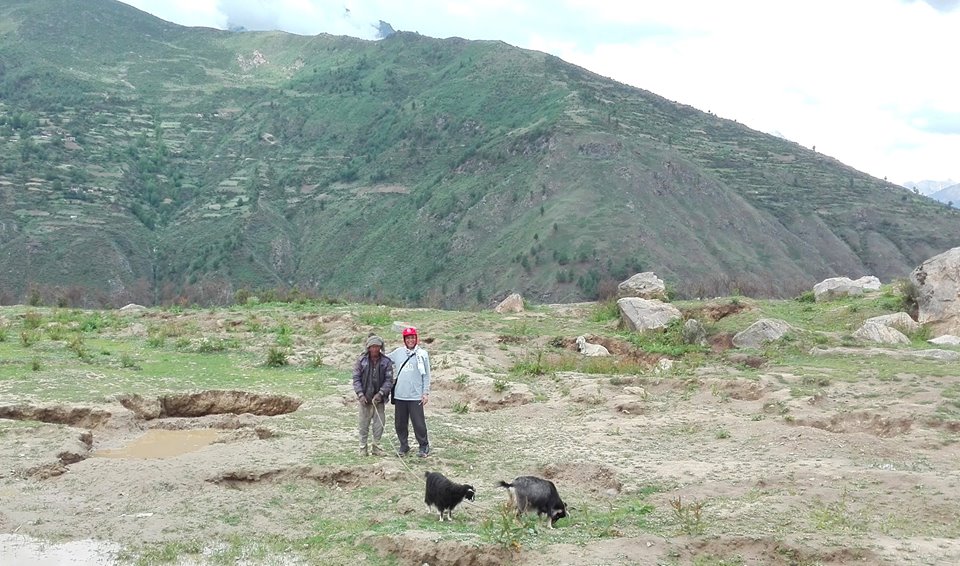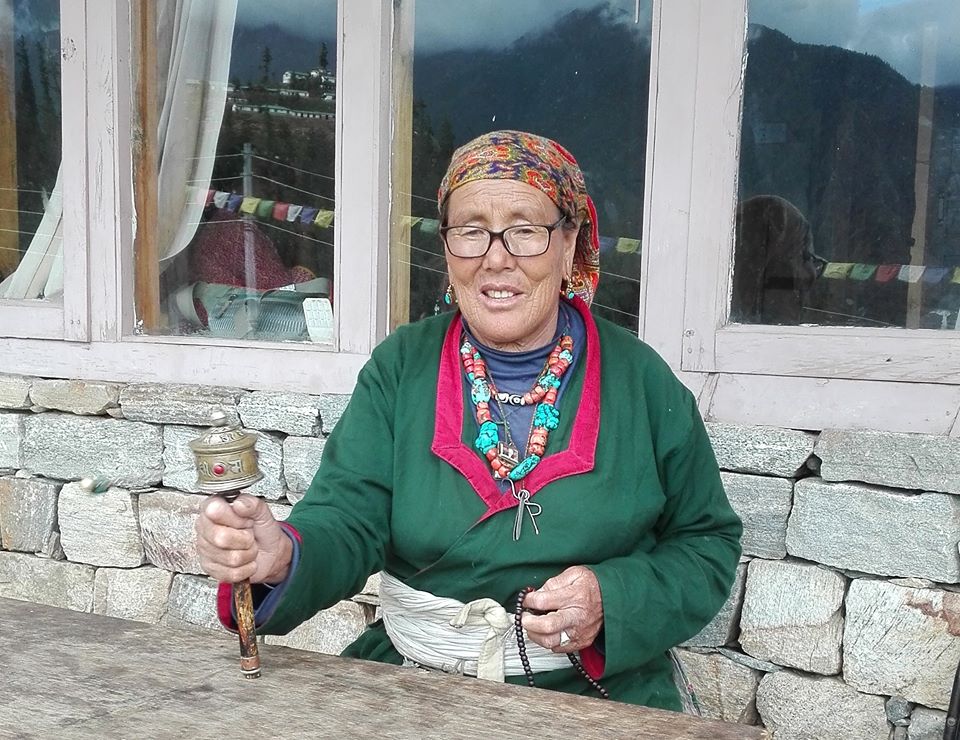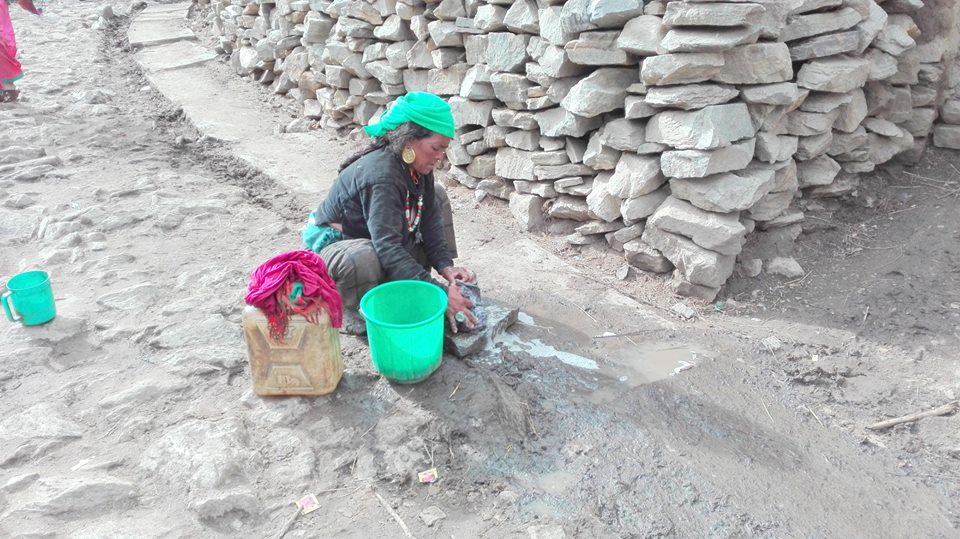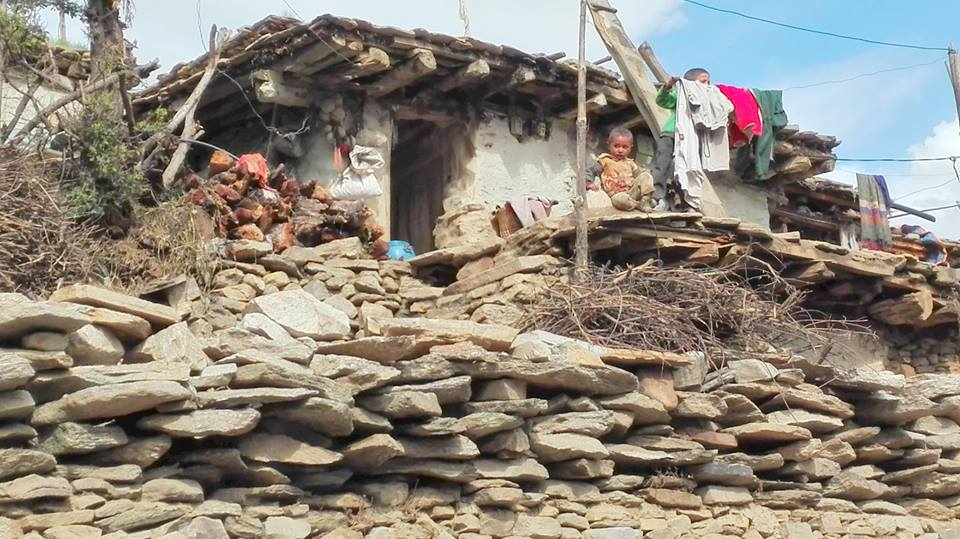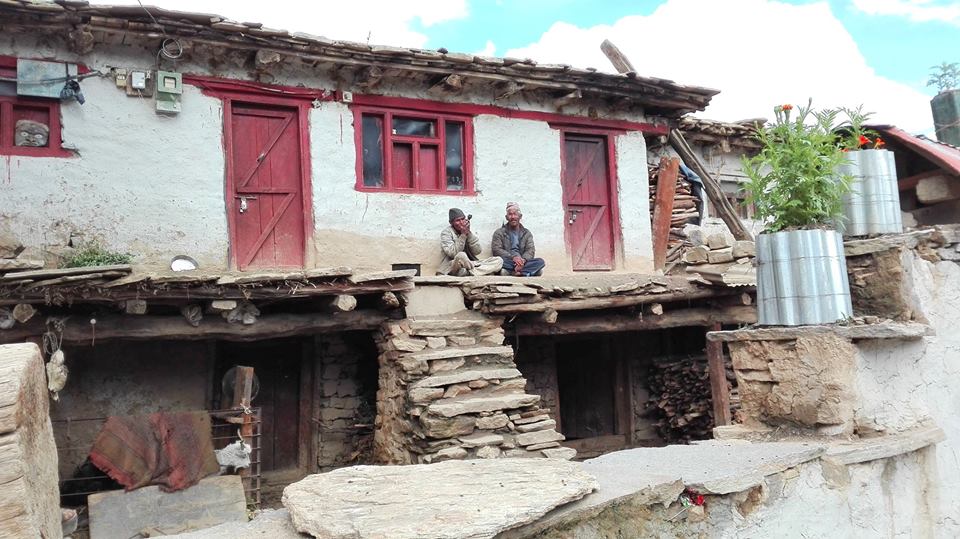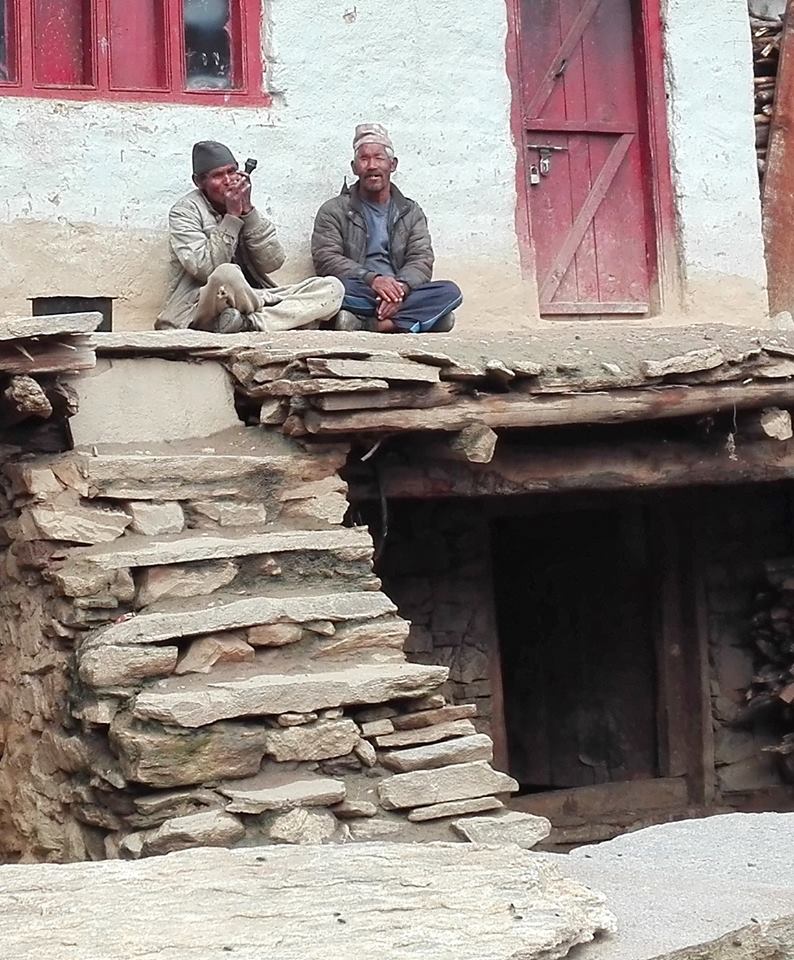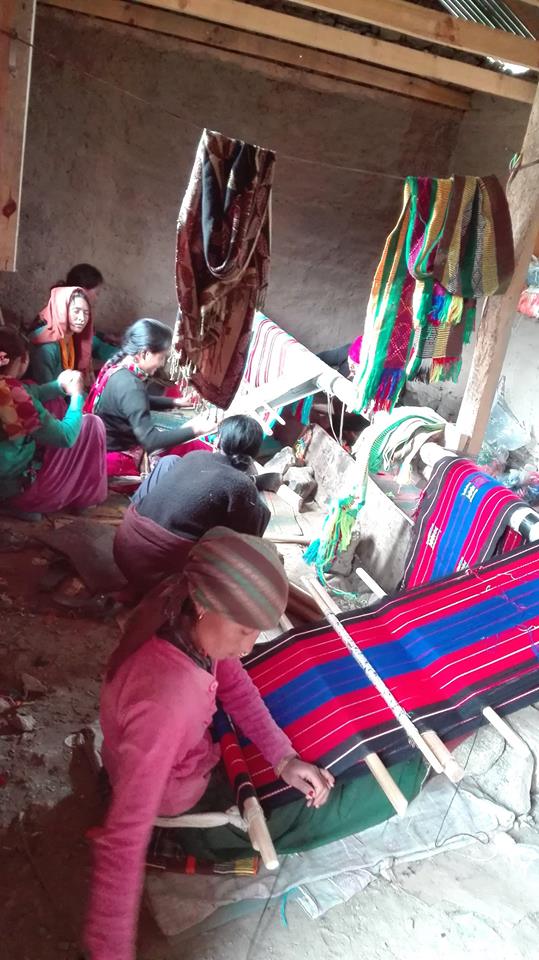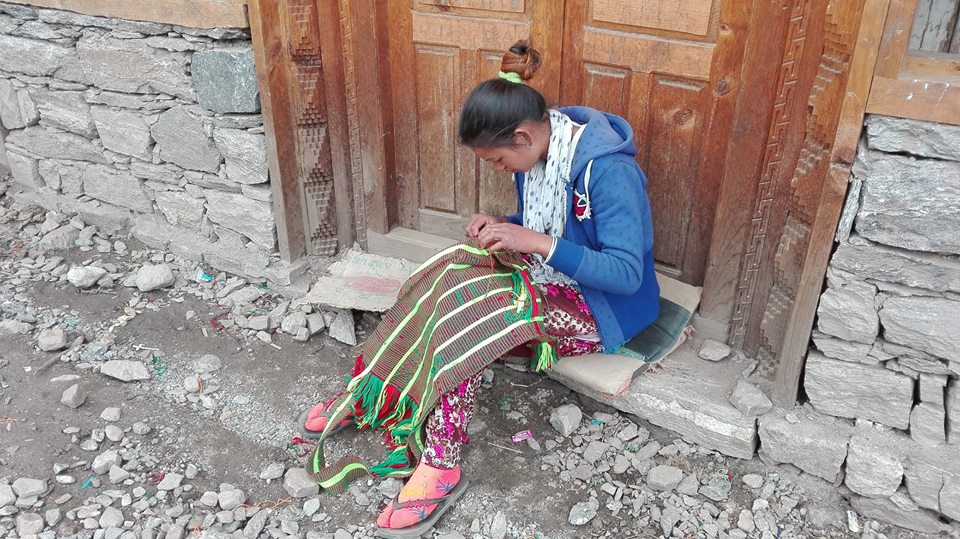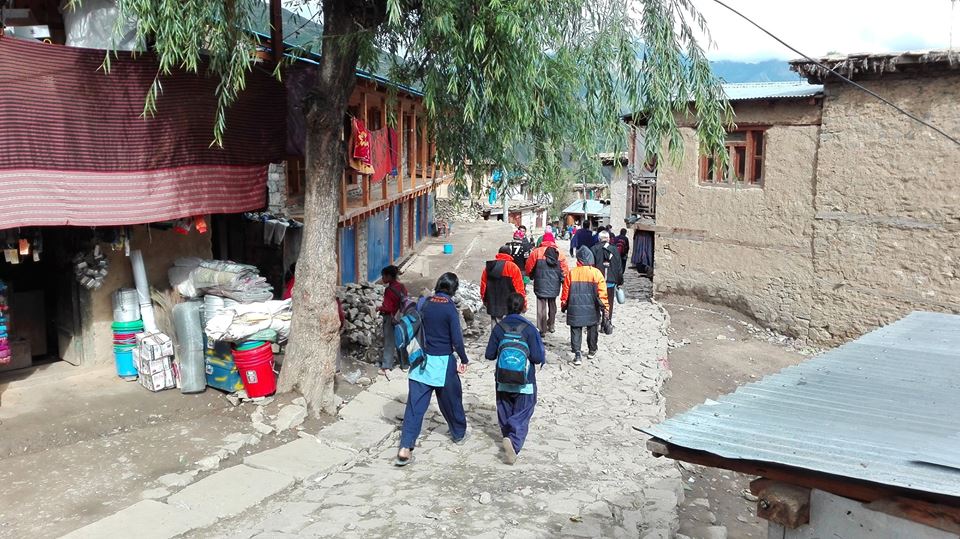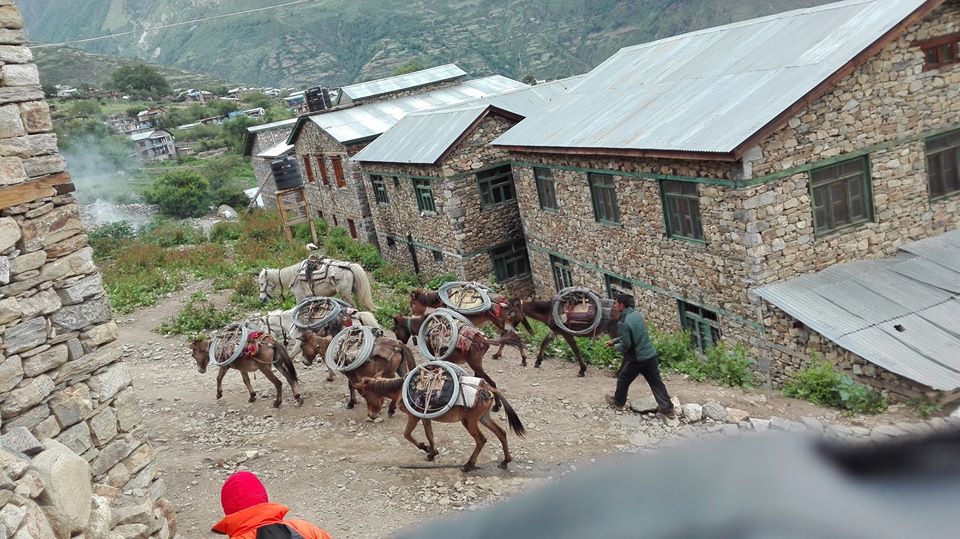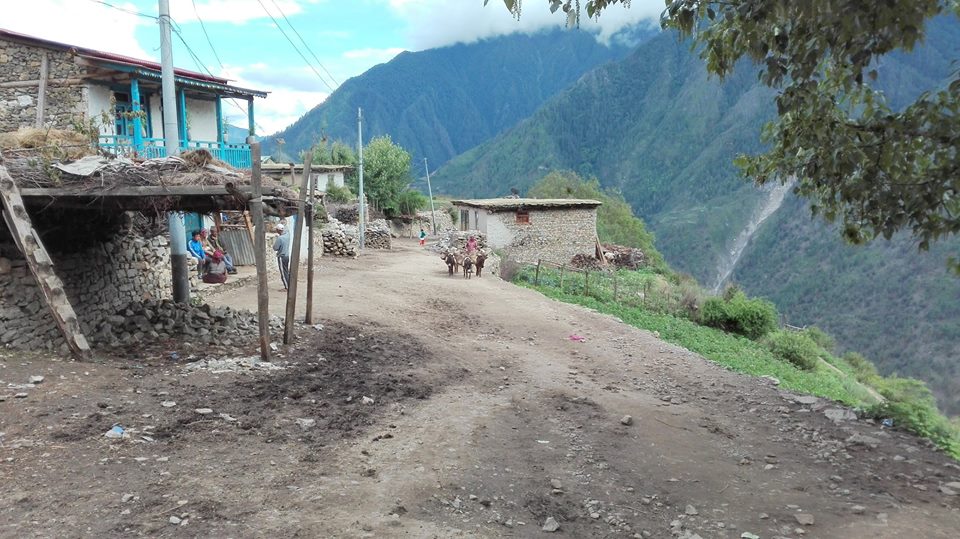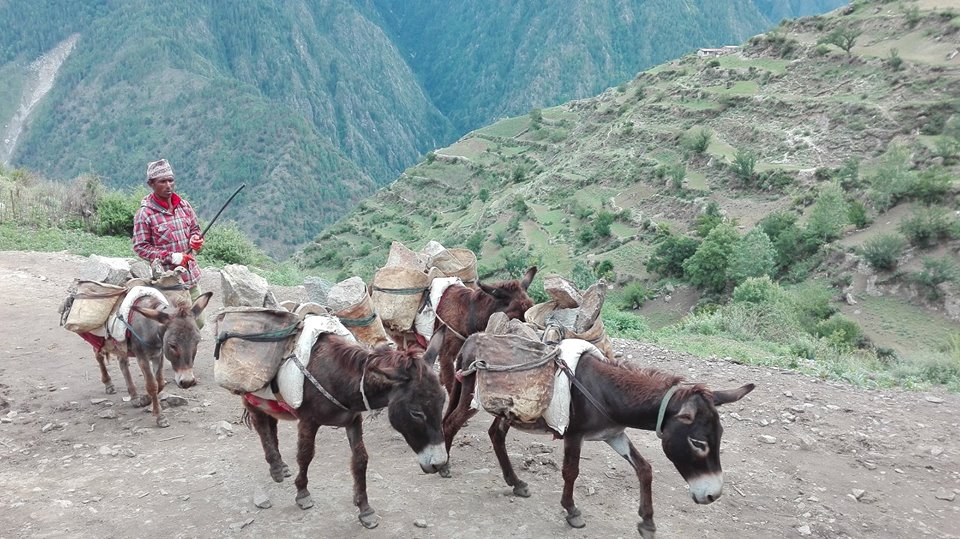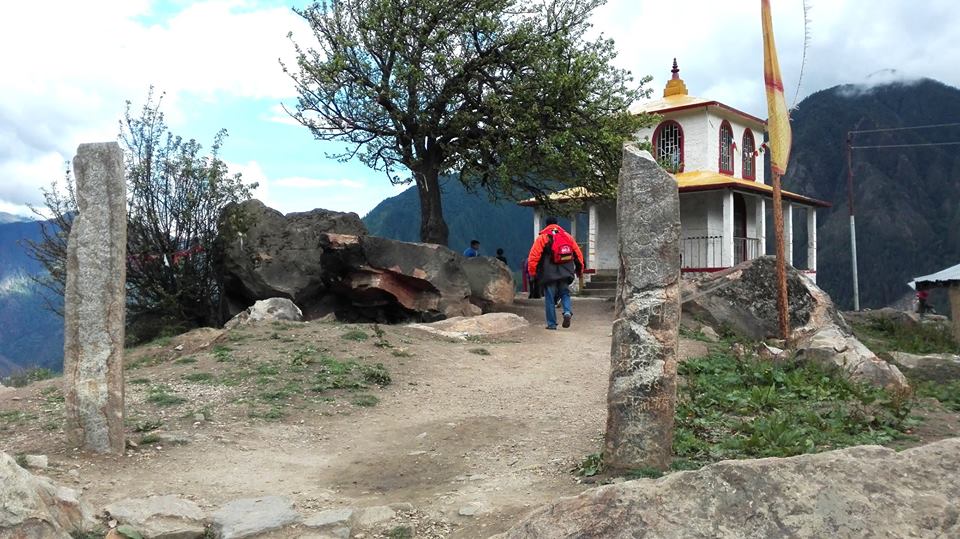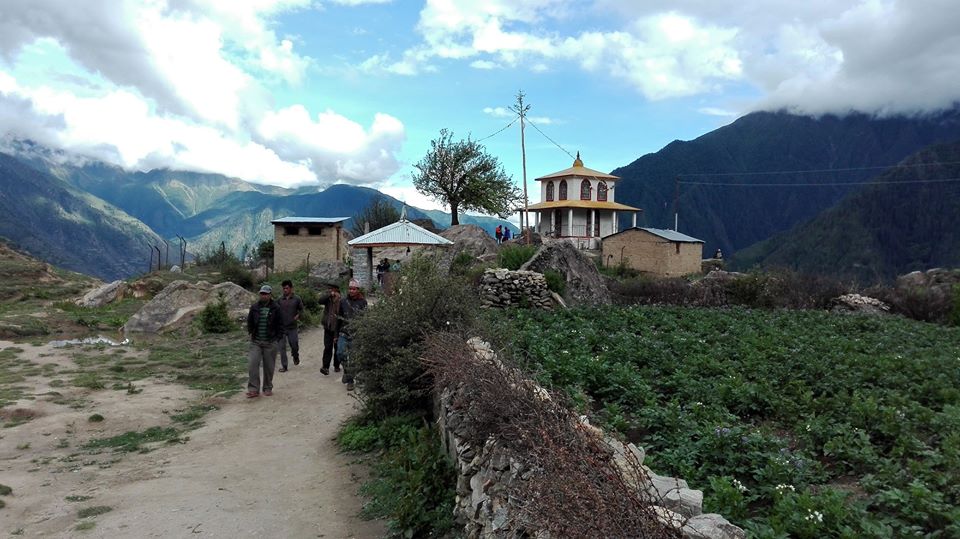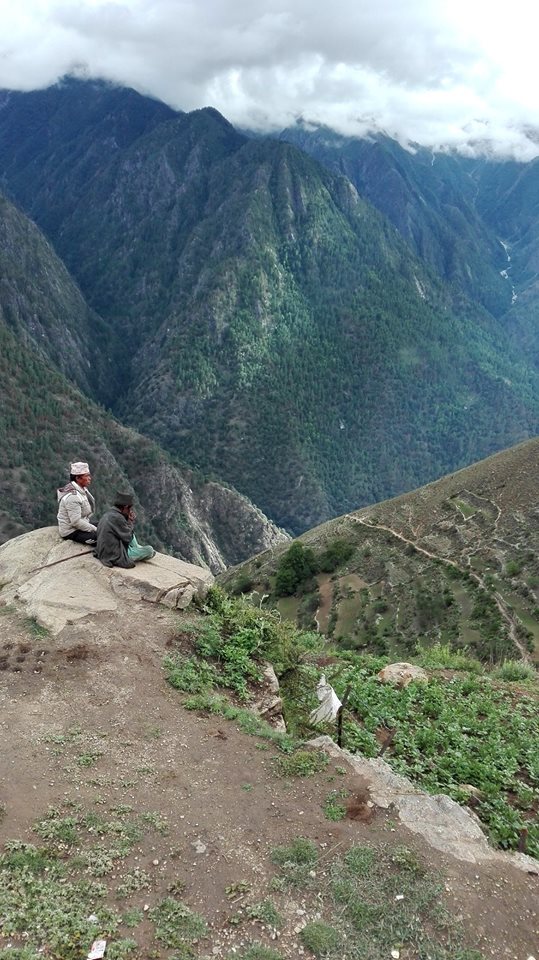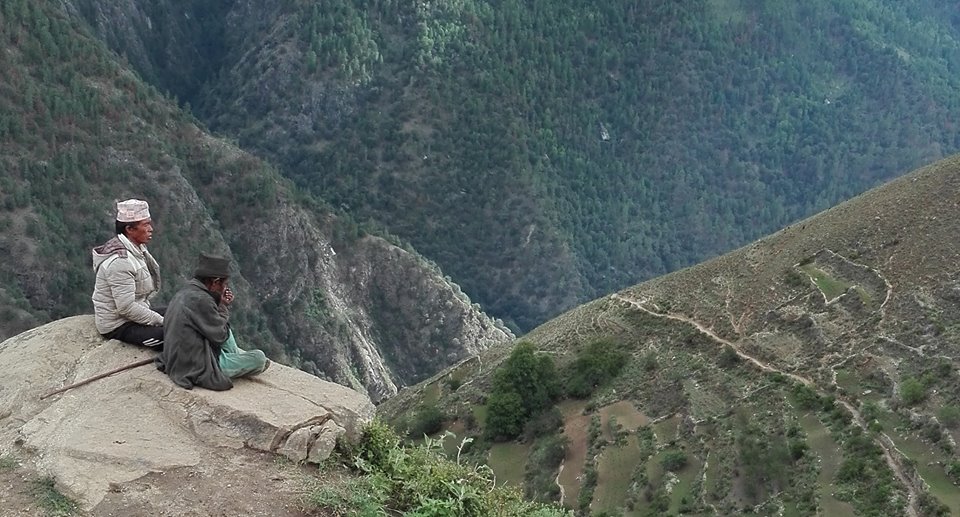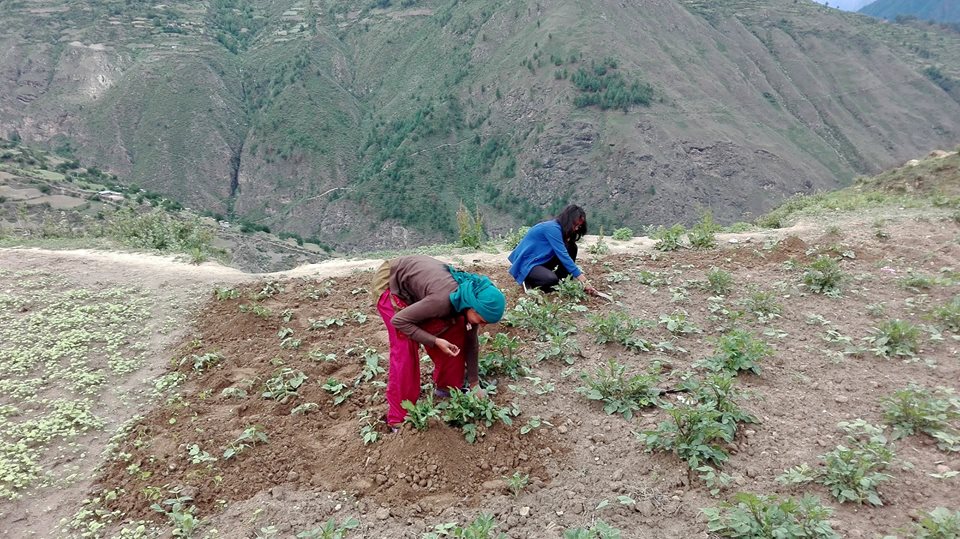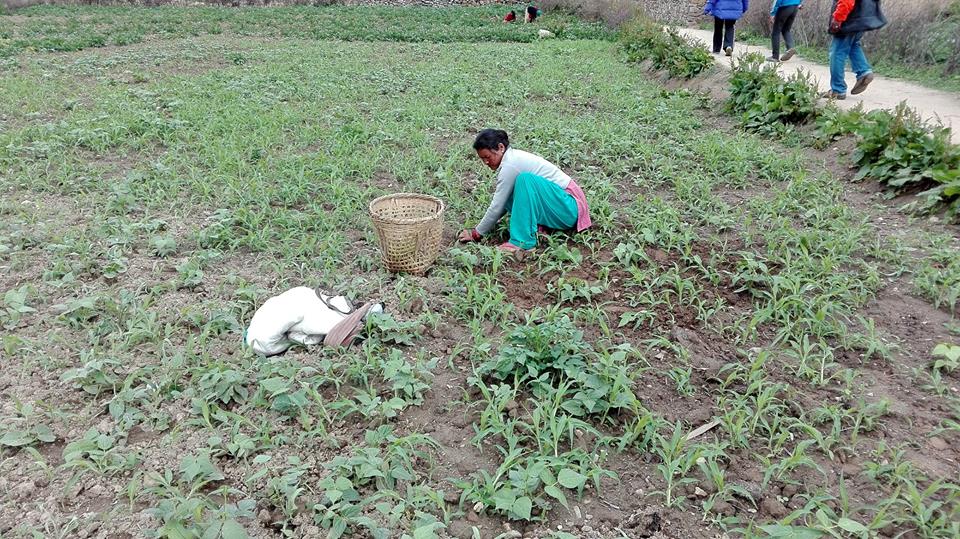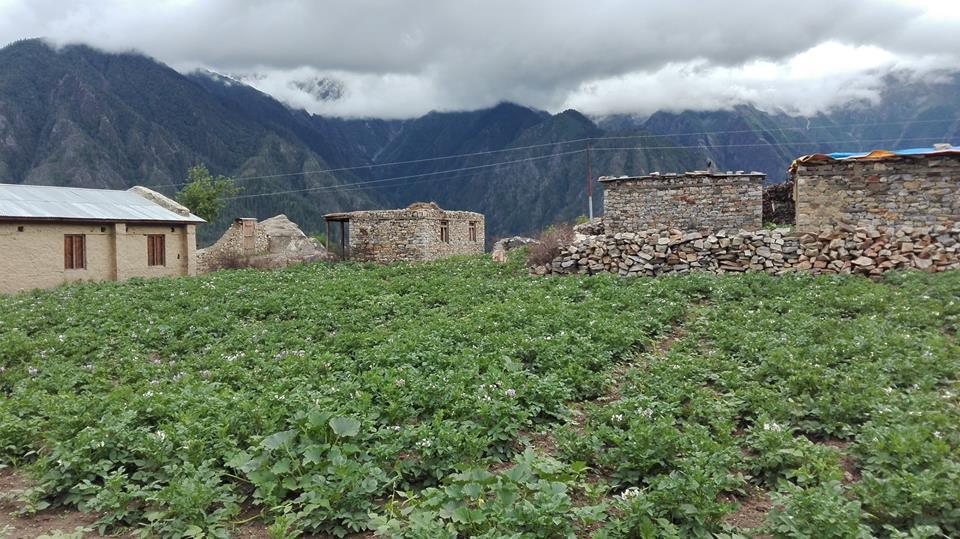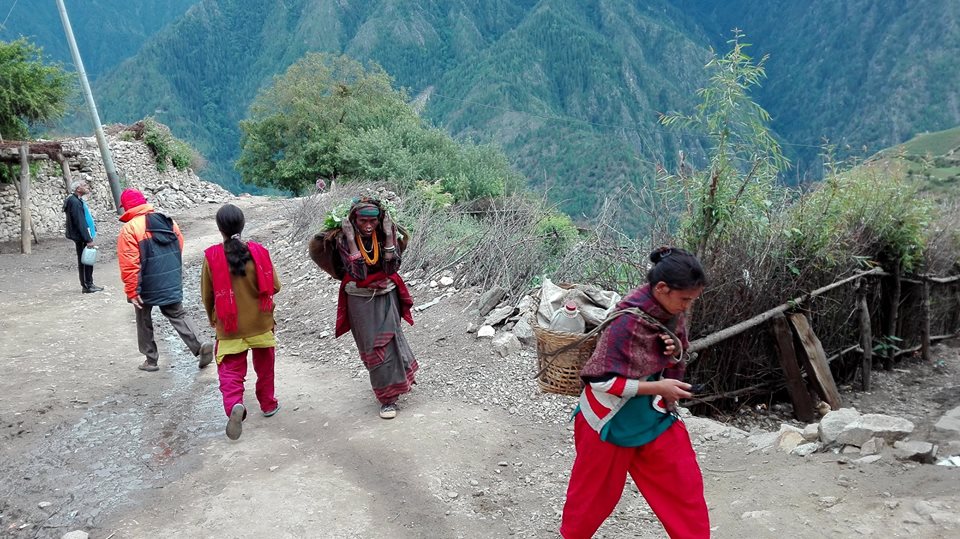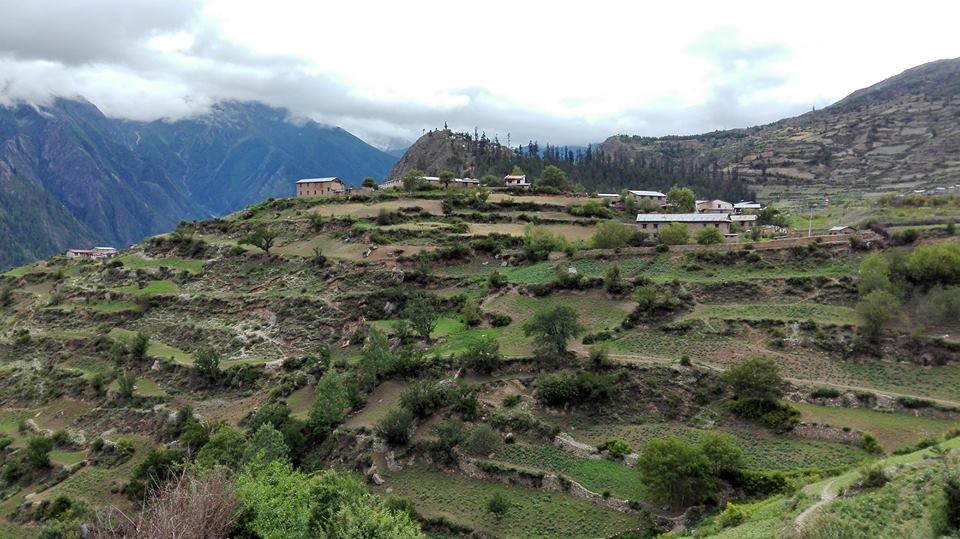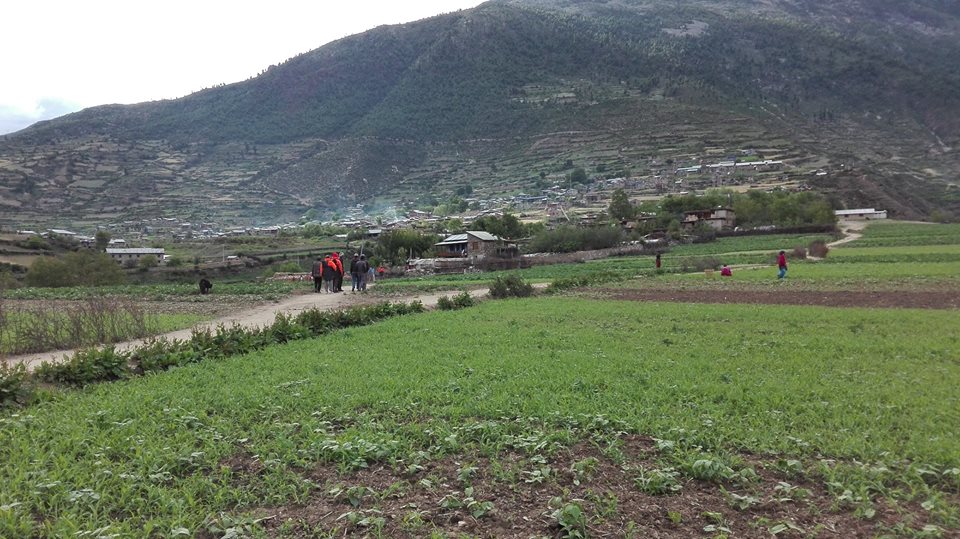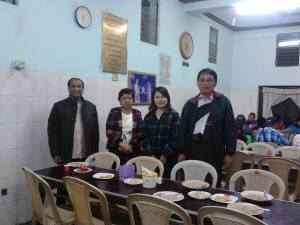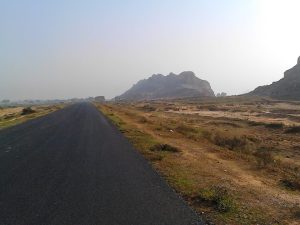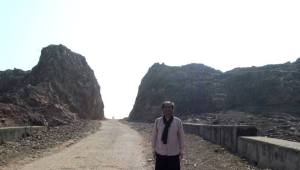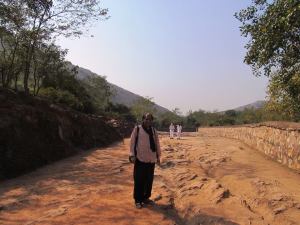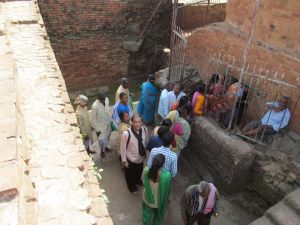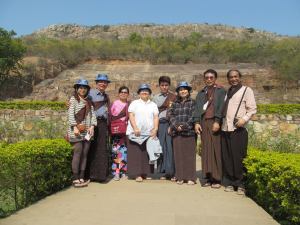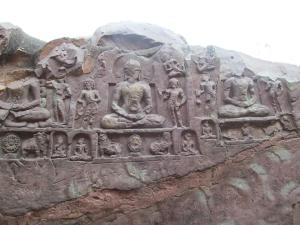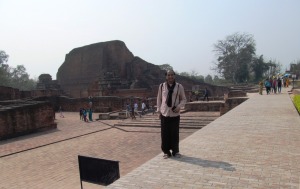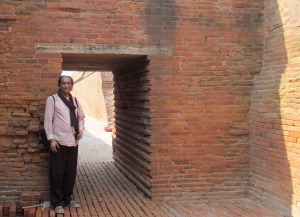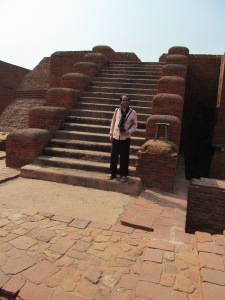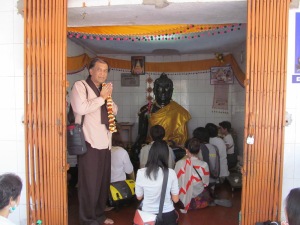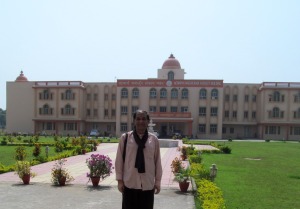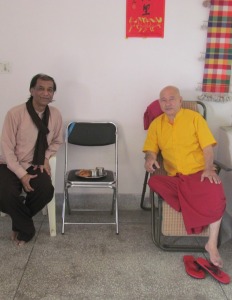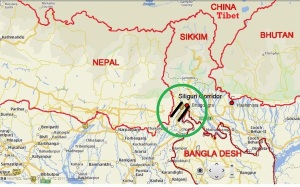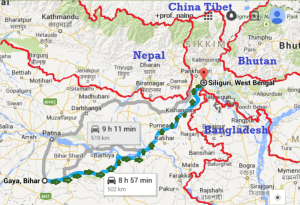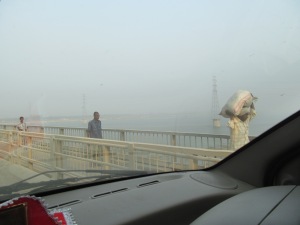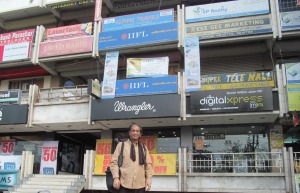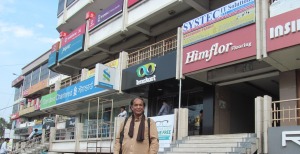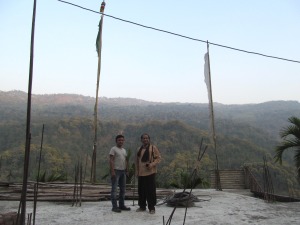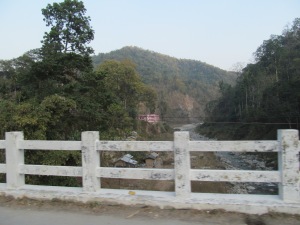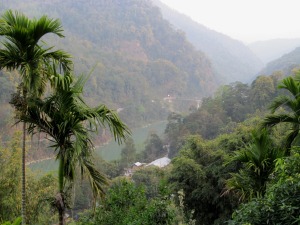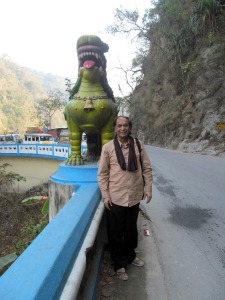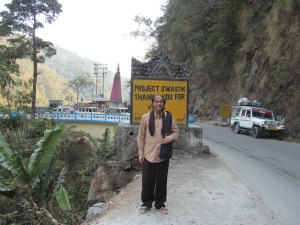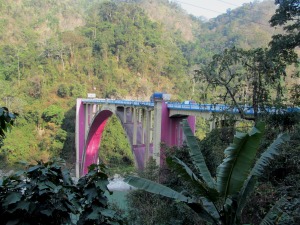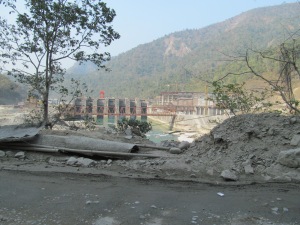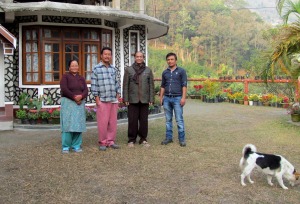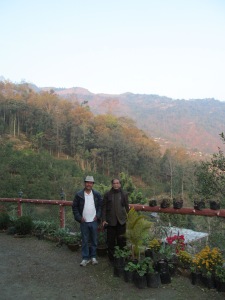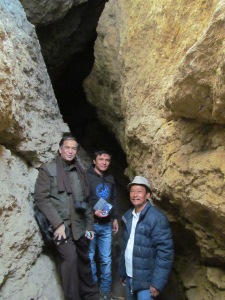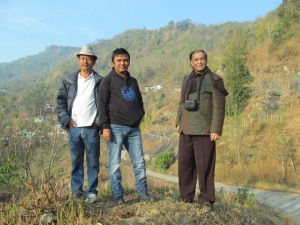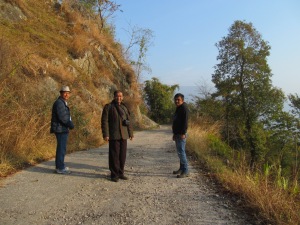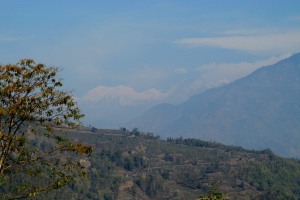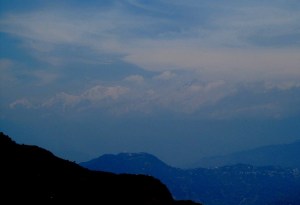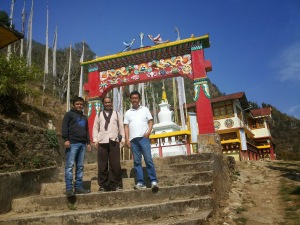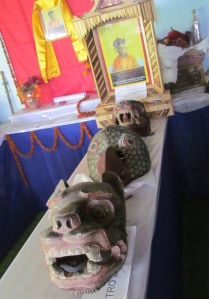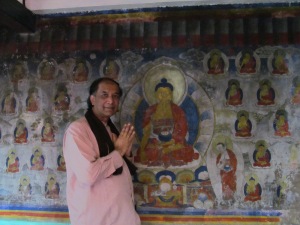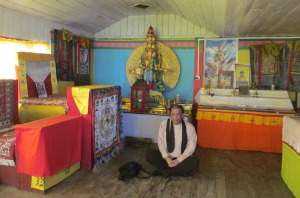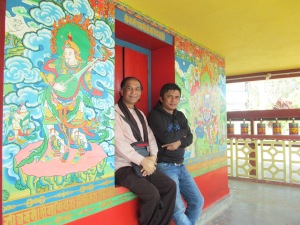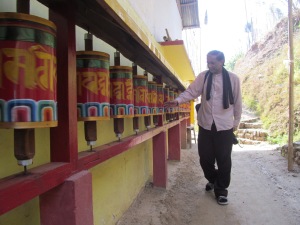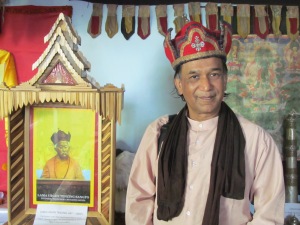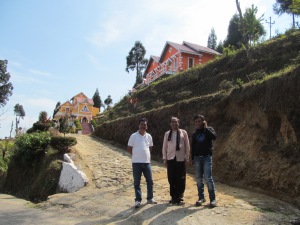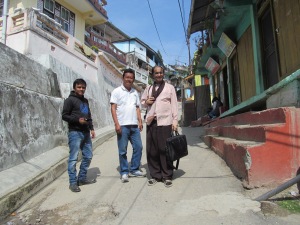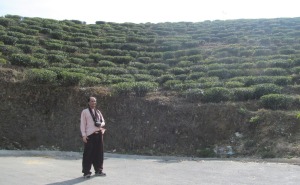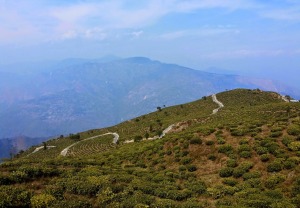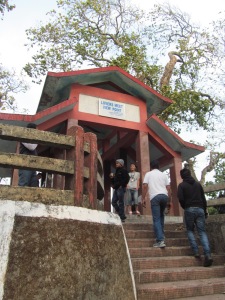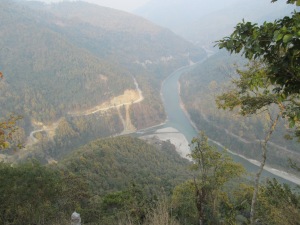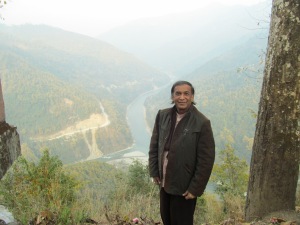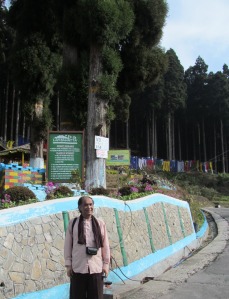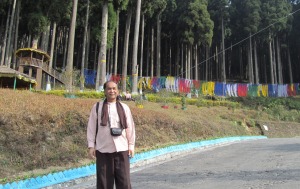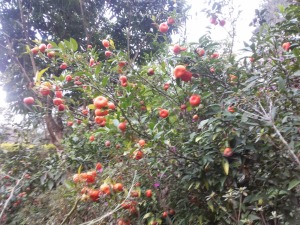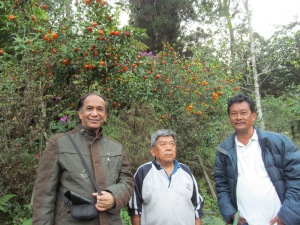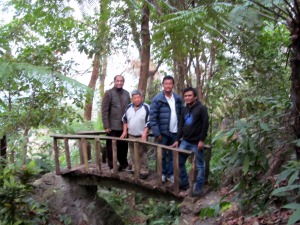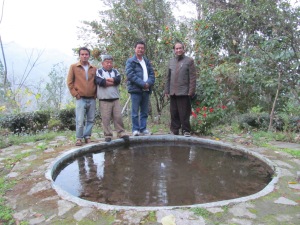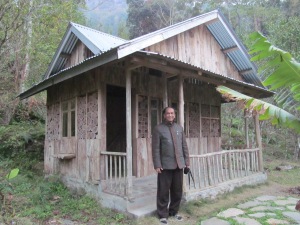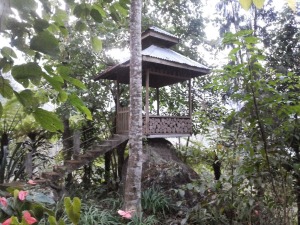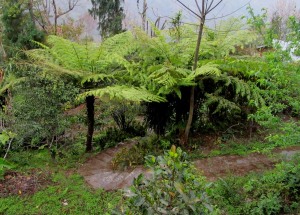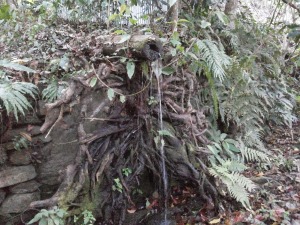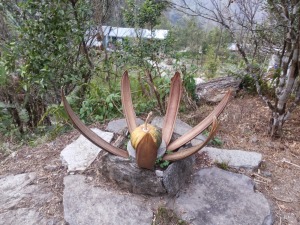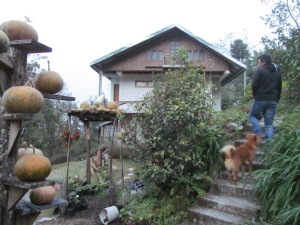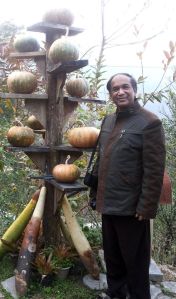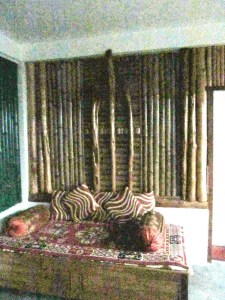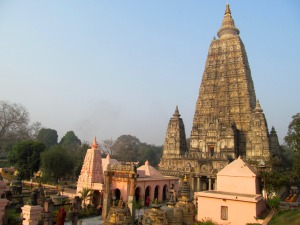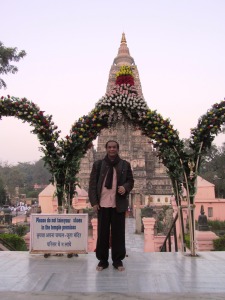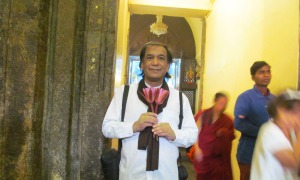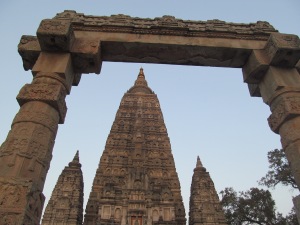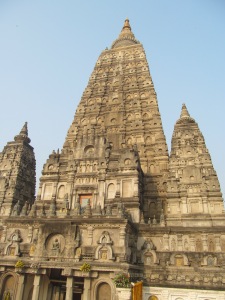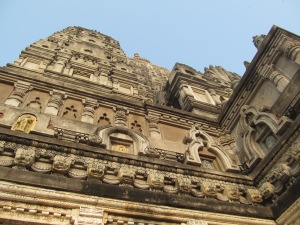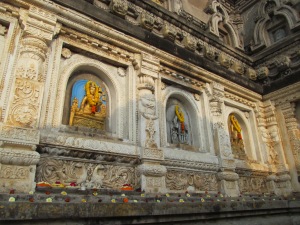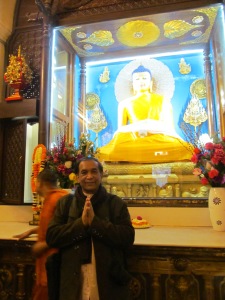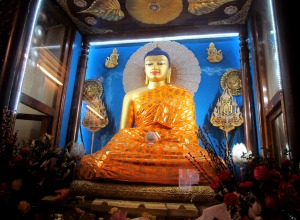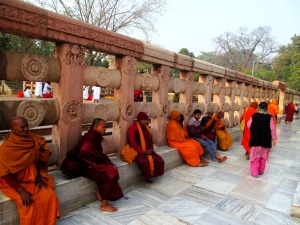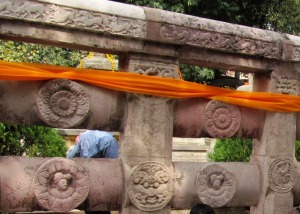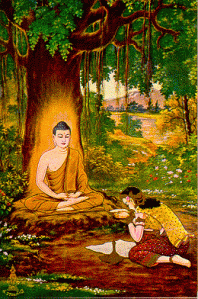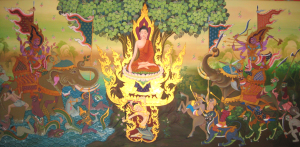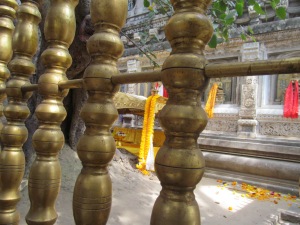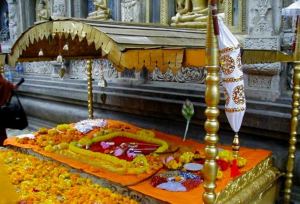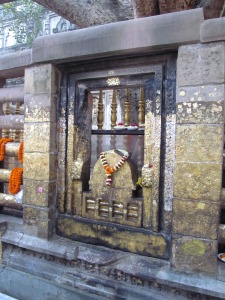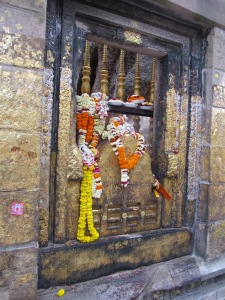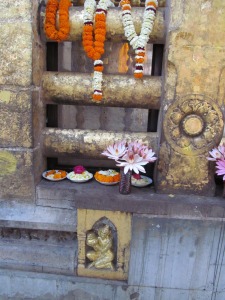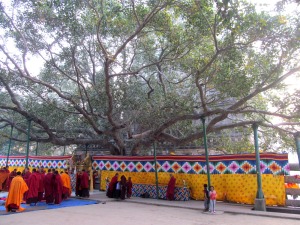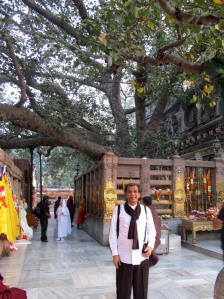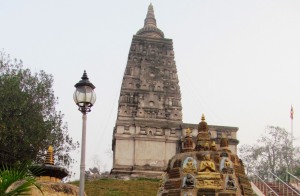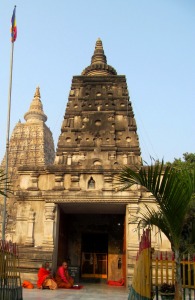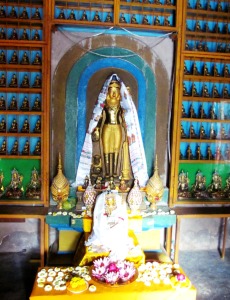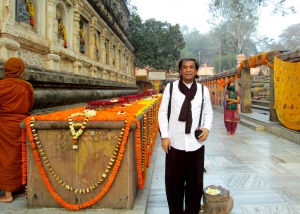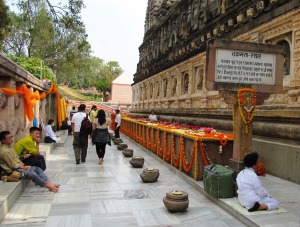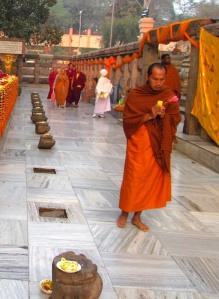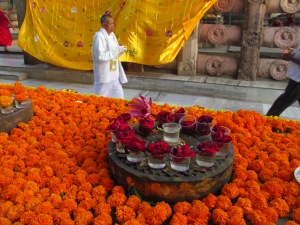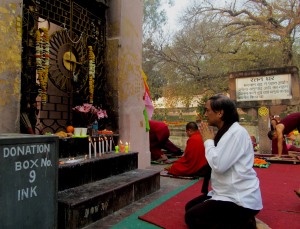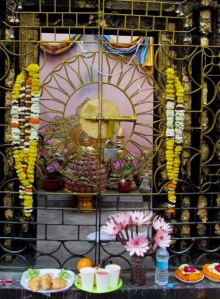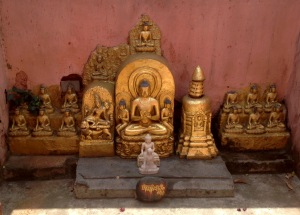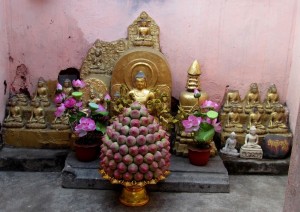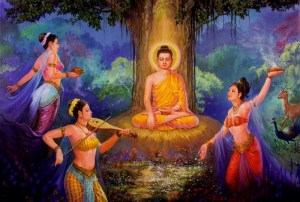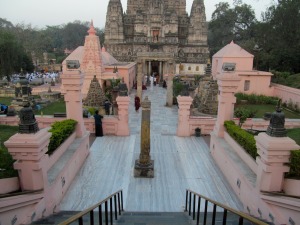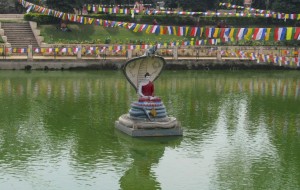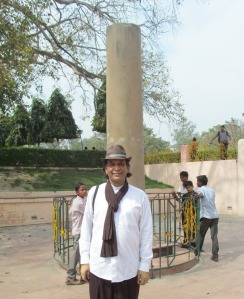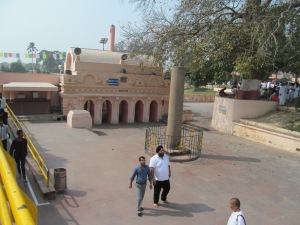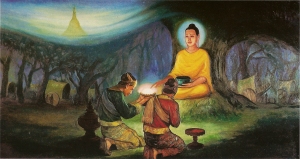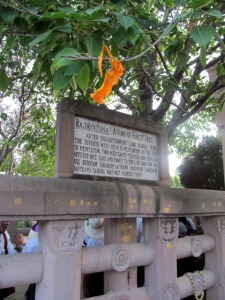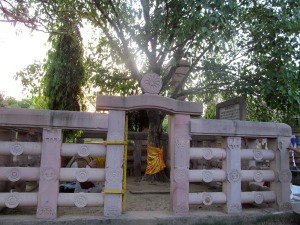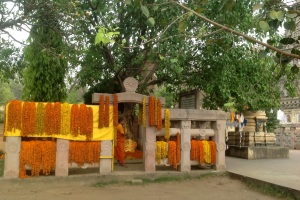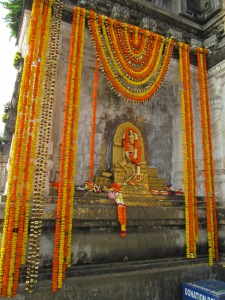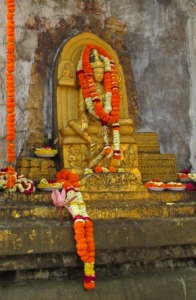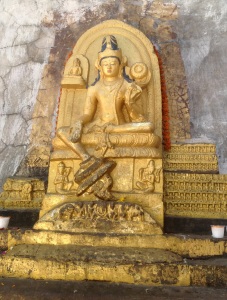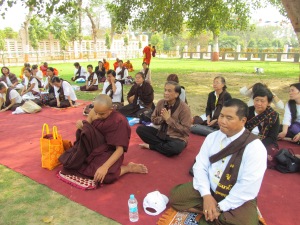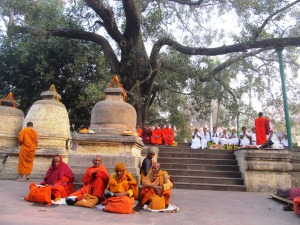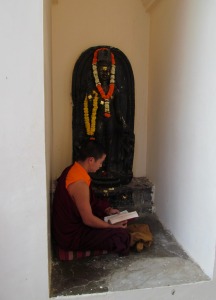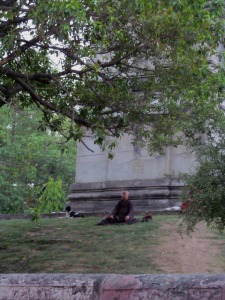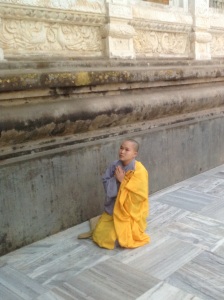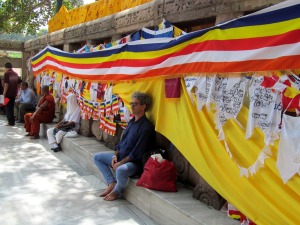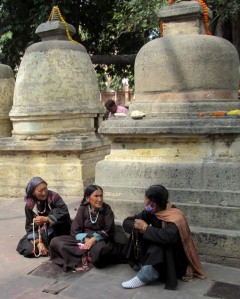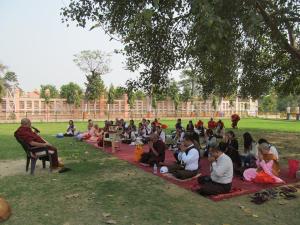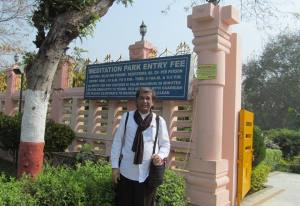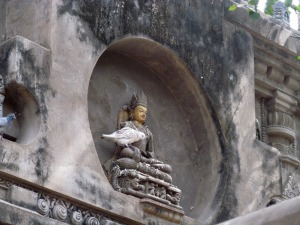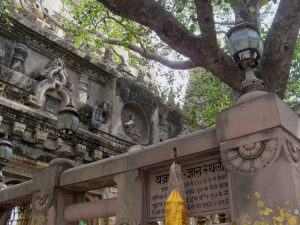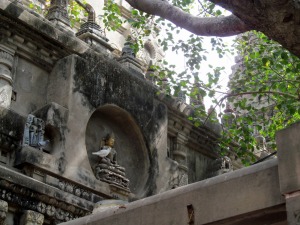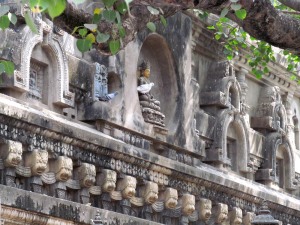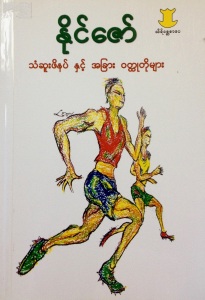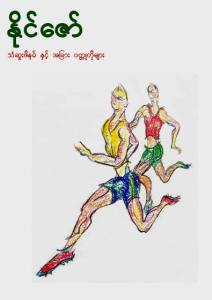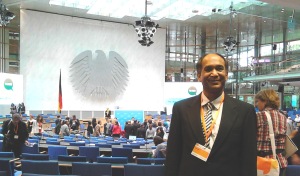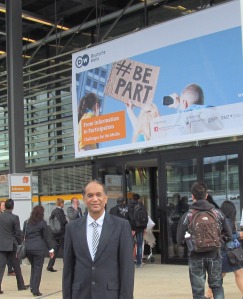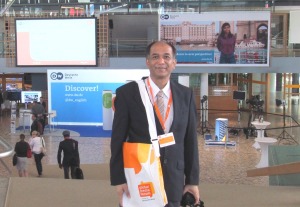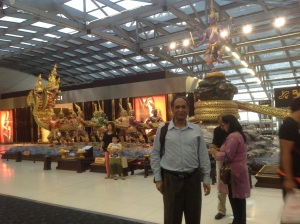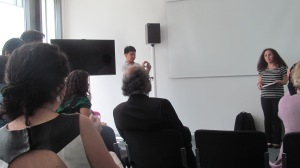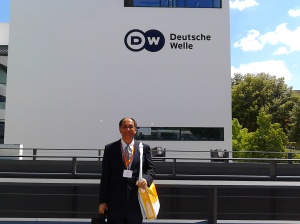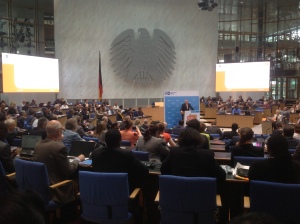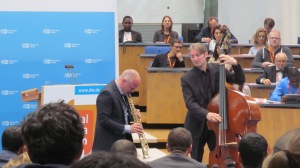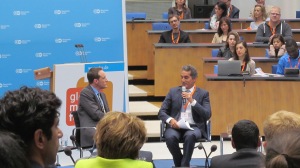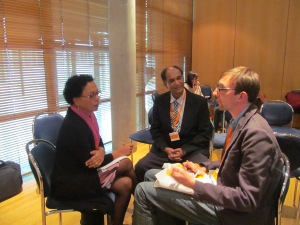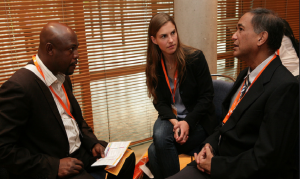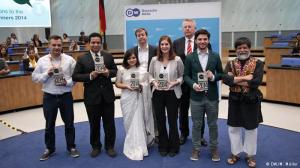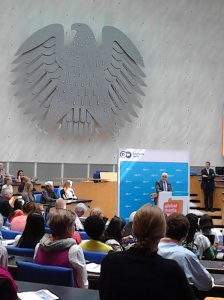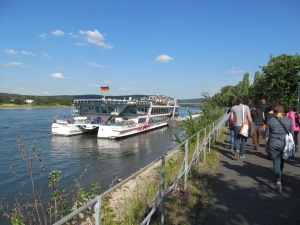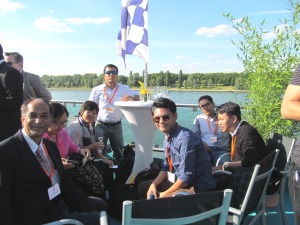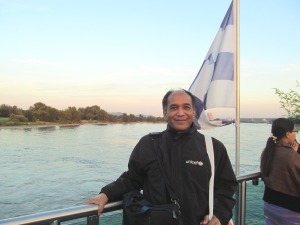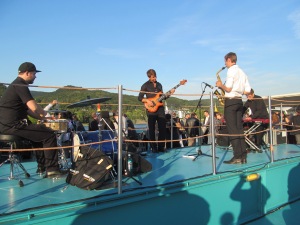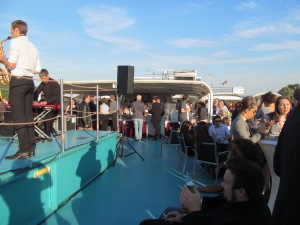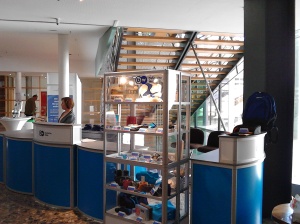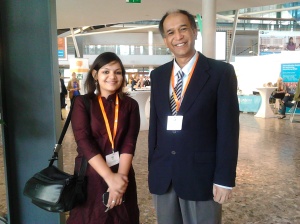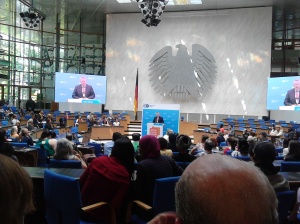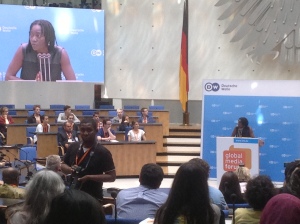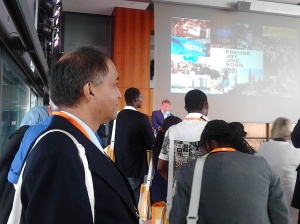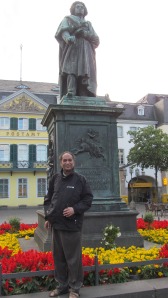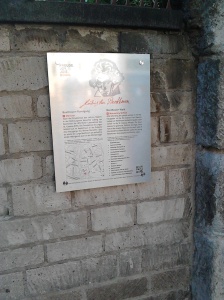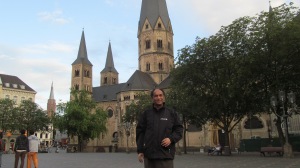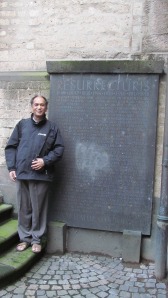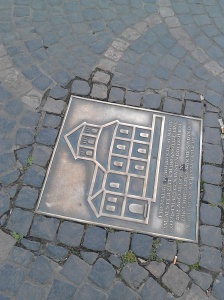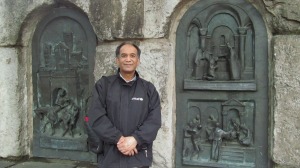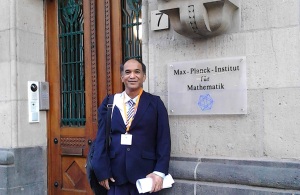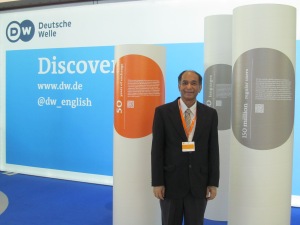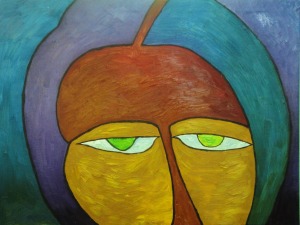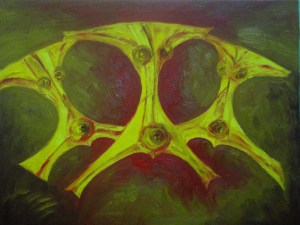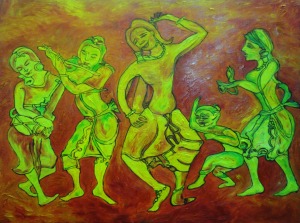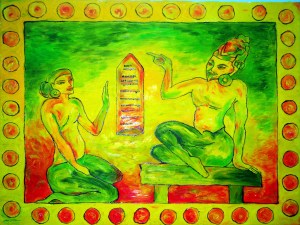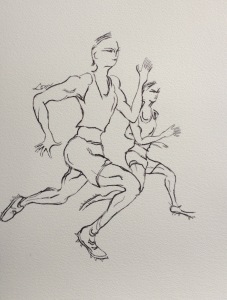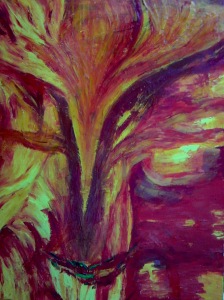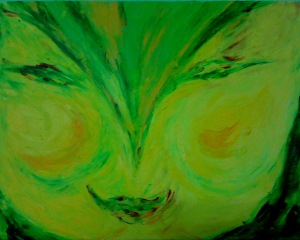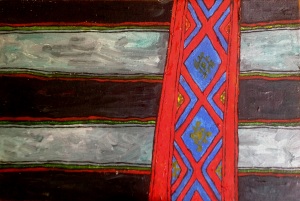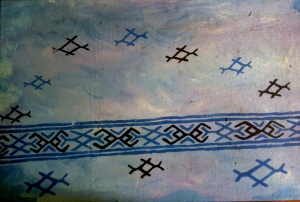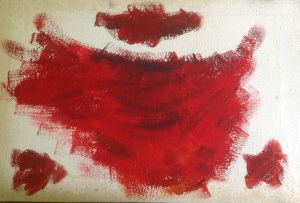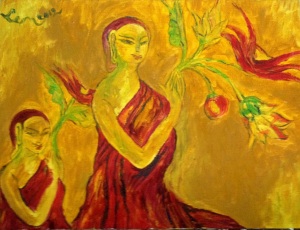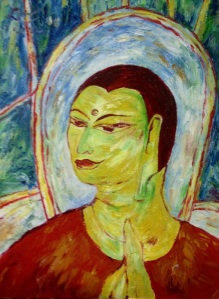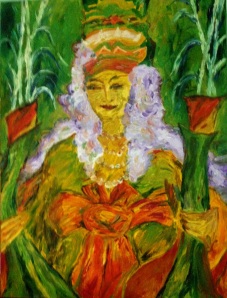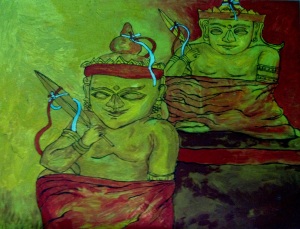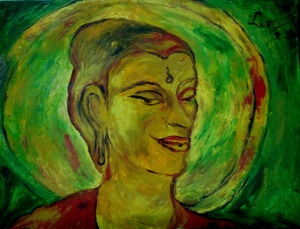MINDFULNESS
With mindfulness I have new eyes.
I used to be totally unfair to myself
Making aggressive judgments, for a long time
I remained ignorant and neglected myself.
Then I was led to the courage and self respect to look at myself
With honesty and gentleness.
My teacher showed me how to breathe.
With each breath I understand what it is to live.
My emotions, thoughts and imaginations just bloom
And then are gone, like morning glories.
Colourful and transient!
Everything comes and goes – all is glorious impermanence.
Conscious attention at each breath is the only constant I can rely on.
How precious is a moment – every split second.
That is where I live.
Behind the emotions, moment by moment
I breathe.
I prevail.
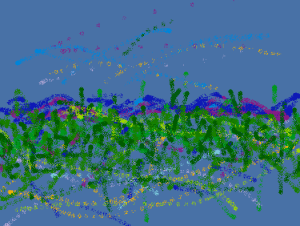
KALAW’S WORLD
1
Opaque with heavy mist, Clocks slowed down, In this small town, There is a man, who not dare nor disregard to throw-off the old love-letters into the dust-bin.
2
When the moon is shining so vividly on the mountains, That man is on the tortuous serpentine lane.
3
When all the houses among the pine-trees were fell asleep and seem to be dreaming From a little house said “The Art!”
4
When all are sleeping and seems to be dreaming, Why is only this little house different?
KALAW PRAYER
1
Oh! birds, I had already said a prayer.
2
May forests be as forests, May mountains be as mountains, May streams remain for long time as before, May the wild flowers scent slickly, and be the same to the fragrance of pine that have strength. May small butterflies be flying in the clean air.
3
May Kalaw remain forever as an ornamental poem of the world.
4
I will also recite that poem for all the time.
NOSTALGIC PINE
1
In this instance, I am not necessary Just to photograph Kalaw (for holding it). I myself is Circulating in the blood-vessels of Kalaw.
2
For an unfulfilling blank, In the morning breeze of Pine forest after the rain, There is the body-scent of my lover far away.
3
Afterward, When I kiss my lover I will be nostalgic for the pines yet again.
NIGHT OF EARLY SUMMER
1
In the twilight, Pines are alluring with their skins of pythons. In the cold air, Sweet, frivolous dizzy scent from the bonfire of the heap of dry pointed needle leaves.
2
Upward to the mountains steps, hands in the air lifted up the stars so high, that they are thrilled with palpitation.
3
Oh! Cute little girl. I can’t carry along your song unto the morning.
Therefore, I apologize you. Please stop singing.
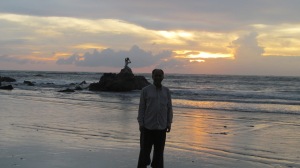
FAREWELL NGAPALI:
Do I hear the mermaids singing?
I’m not sure, but I am fall in love with the sea for its power to make me inspired. …
Go out with the setting sun on an vacant seaside is truly embracing to me. I walked barefoot till late night along the shore with rhythmic heartbeats of the enormous water, listen the great elemental sounds of outer ocean.
All the fragrances, noises, scenes, tastes, and touches of the sea are cool. I understand that no wave can exist for itself, is ever a segment of the continuous throbbing surface of the ocean.
Life never ends as a ripple reaching to the sandy beach, but successive upsurges will come up endlessly.
As I well apprehend that the sea does not allow anxiousness, greediness, or impatience, a humble existence is worthy with me. I make my mind clean, open and empty as a beach, expecting wonderful gift from the sea.
Then exactly I have bliss.
Able to collect only a few shells here, but my memories will remain on, even once my footprints in the sand vanished.

GREAT MOTHER;
The earth is mother.
Let dance raw and free with raw drumbeats, gongs, cymbals and hand clapping.
Respect to the energies of nature, Make balanced between gods and human.
With a dancing raw and free, harrow the mother Earth with reverence and Make harvest good.
Hunt the preys with due regards.
Ask woods and bamboos for housing,
With raw drumbeats, gongs, cymbals and hand clapping.
(from “the Earth” by Naing Zaw)
Thirivatsa publications, Myanmar, 2009
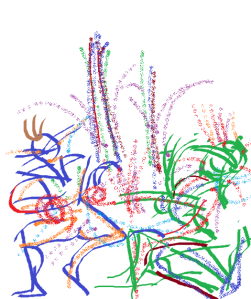
FULL MOON NIGHT
Tomorrow,
A boy will have a chance To go back home.
He will paint roofs,
He will paint homes,
He will paint all roads,
He will paint completely the small town.
He will also paint himself.
However, let Hills, forests, streams and sky to be natural.
Today is significant.
(from “the Earth” by Naing Zaw)
Thirivatsa publications, Myanmar, 2009
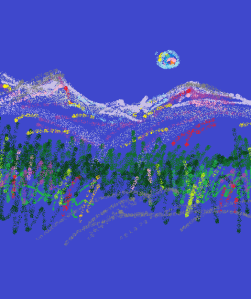
NORTHERN MYANMAR
Mountain gods and Mountain goddesses,
Each with their white snow coronets.
Externally they seems so solemn.
The sounds of their heartbeats are so delicate and quiet.
In that circumstance,
I can hear the sounds of my heartbeats.
Their heart blood is Clean, cool and sweet.
My heart blood is half blue, half red
Warm, Salty sea.
(from “the Earth” by Naing Zaw)
Thirivatsa publications, Myanmar,2009
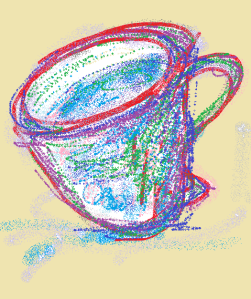
WATER
When I was young
General Science taught me that
Water is colourless, odourless, and tasteless.
In fact,
water has Sheer colour,
Extraordinary odour,
and Whenever drink it seriously,
Get the taste of water.
I have known all these Much later.
(from “the Earth” by Naing Zaw) Thirivatsa publications, Myanmar,2009
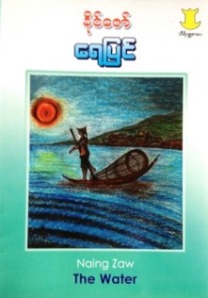
FISHERMAN
1
Night . .
Lake, S
ickle moon,
A small boat,
A net spreading suddenly
Like an extending wing.
2
Small fishes are wobbly jumping
Inside the small basket.
3
At the tiller,
Mother’s breast gets rid of
Being sucked by little child,
Who suddenly crying shrill.
4
Father Spreading a net Like an extending wing.
Red cigar light
At his lips.
5
Little child
Stops crying as
He gets the milk breast again.
6
Pulling up the net,
There are three or four
Tiny fishes
In the hull.
A small boat,
Sickle moon.
(from “the Water” by Naing Zaw)
Thirivatsa publications, Myanmar, 2010
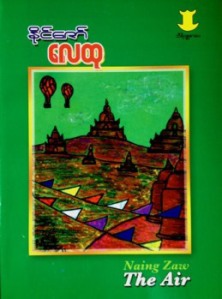
BAGAN SUNRISE
A vermillion Sun is rising from the East,
Another vermillion Sun is swimming in the river,
When I am rowing a bird-boat,
you are at the helm.
One side of the river is an ancient city,
Another side is Tant-Kyi mountain range.
In the previous lives,
Was I a carpenter in the pagoda building and
Were you a mural painter?
Was I a fish in the river and
Were you a bird in the air?
Was I a bee on the mountain and
Were you a flower?
On the other hand,
Were we flowing water together in this river?
(from “the Air” by Naing Zaw)
Thirivatsa publications, Myanmar, 2011
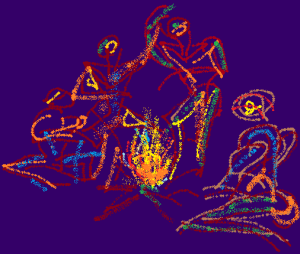
ANYATHEIANS;
Our Ancestors I pondered,
after picking up one of the scattered stone tools
on the Iron hill.
They were hunting,
fishing, and gathering the fruits and cereals
around the terraces of river Ayarwaddy.
They were afraid of darkness and rely on sunshine and moonlight.
Respect the Sun and the Moon.
Venerated the large trees.
\Awed upon the energies of rain, wind, lightning and thunder.
Gratitude to the Earth for their standing.
Believed that great mount Popa as home of the divines.
At nights, they made fire with tribute and eat provisions with honor.
They were thinking more about
the concerns of their environment than themselves.
(from “the Air” by Naing Zaw) Thirivatsa publications, Myanmar, 2011 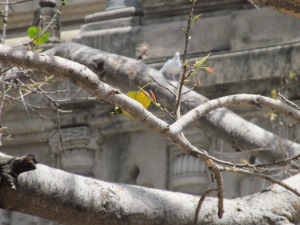
AN ANCIENT TREE
I sit from day to day
Under the shade of an ancient tree with great legacies.
As the season comes
Numerous birds with various colors
Among the branches
Chirping happily and enjoying the fruits.
When a breeze whoosh
Old yellow red leaves fallen like raindrops.
Since the folks take sacred to those leaves
Each passer-by carried away them
To keep as precious mementos.
Suddenly at one day
There are no more old foliage shedding down
I looked up and see that all the ramified boughs stripped unclad.
All at once
The tree attired with new shoots and fresh orange green petals
A white bird come and perched on a branch!
All have to wait for a whole year to shed old leaves,
Which are today’s new.
(April 11th 2014 at Bodhgaya)
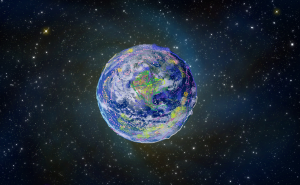
GRATITUDE TO THE AIR
If the Earth is a ball “the Atmosphere” is covering delicately on the Earth like a thin sheet of paper.
Not even as thick as an exocarp of a fruit or pericardium of a heart.
However! Only for the existence of the Atmosphere “the Life” can appear on the Earth and water.
Only for the existence of the Atmosphere “the Life” can persist on the Earth and water.
(from “the Air” by Naing Zaw) Thirivatsa publications, Myanmar, 2011
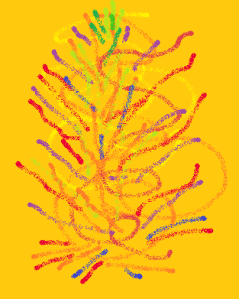
WECOME! TOMORROW (In the Heat of Tropical Summer)
Our tropical regions have only 3 seasons, summer, monsoon, and so called winter.
Now! Heat of tropical summer is swiftly coming with thermal waves, illusive mirages, gust of feverish whirlwind. Long Summer days are full of oneiric dreams, followed by insomniac short nights.
Beautifully intoxicated time is moving sometime like unmoving.
All trees shed their leaves and stand up with their …transparent skeletons.
Leaves of “the Past” heaped and scattered with waft.
According to Myanmar tradition “Summer” is the most Scenic season, even enlightened one can confuse with it’s enchantment.
I am just be awaiting!
Future’s footsteps still echoing from far away.
However!
Within a few days the new shoots will come up, still not so green because of their so pure freshness.
Expecting blooms of almost blinding bright and colourful flowers with their sweetly honeyed perfumes.
Cycle of life will rise up again with full of strength.
Journey is long, yet no one is late, not a single one be left behind, because targeted destination is for everyone. Tomorrow is welcoming!
(2014 February 19)


















